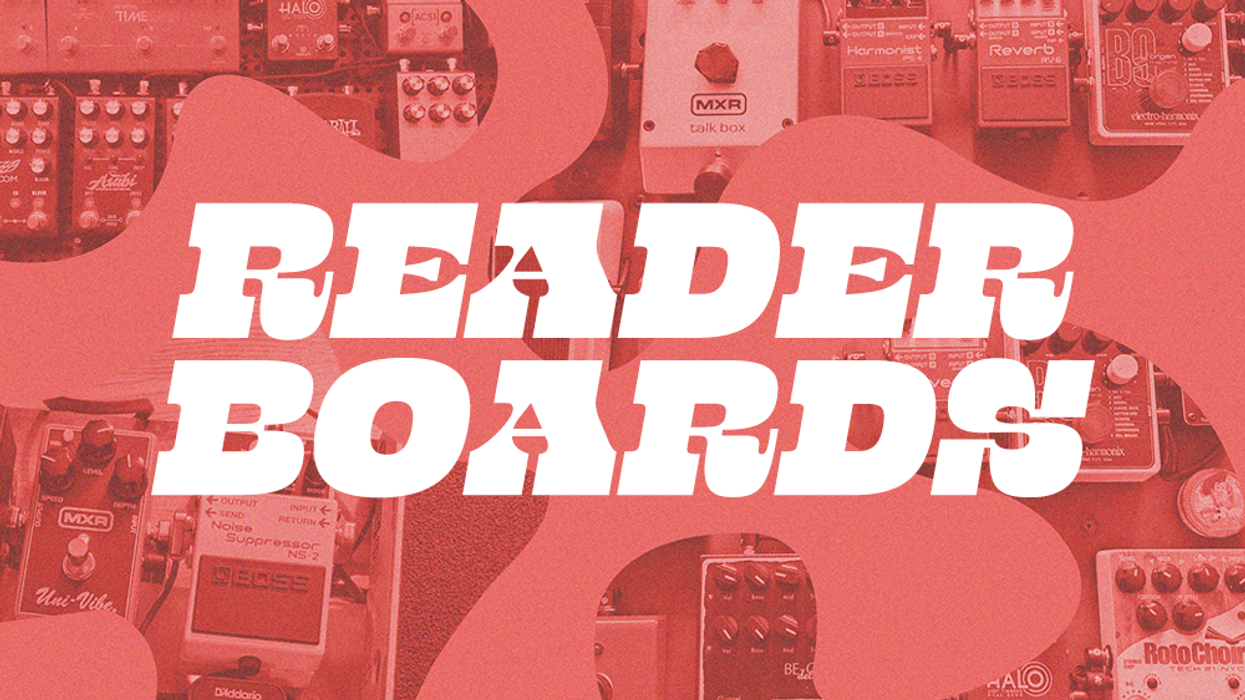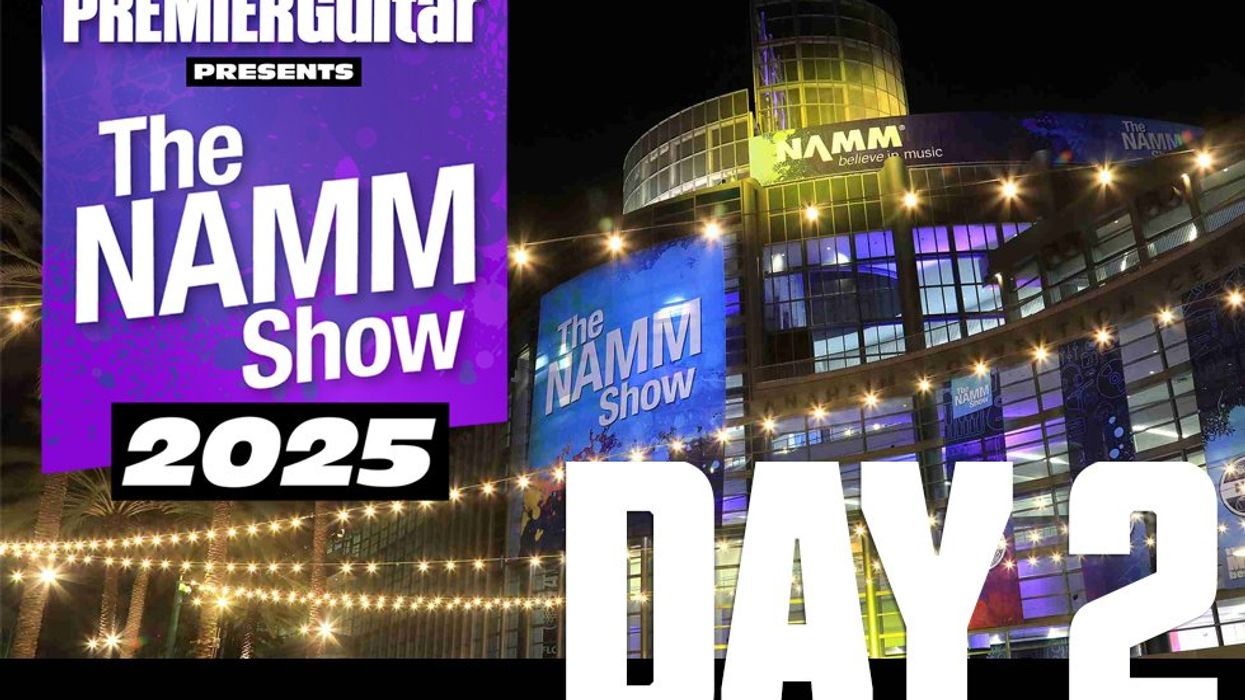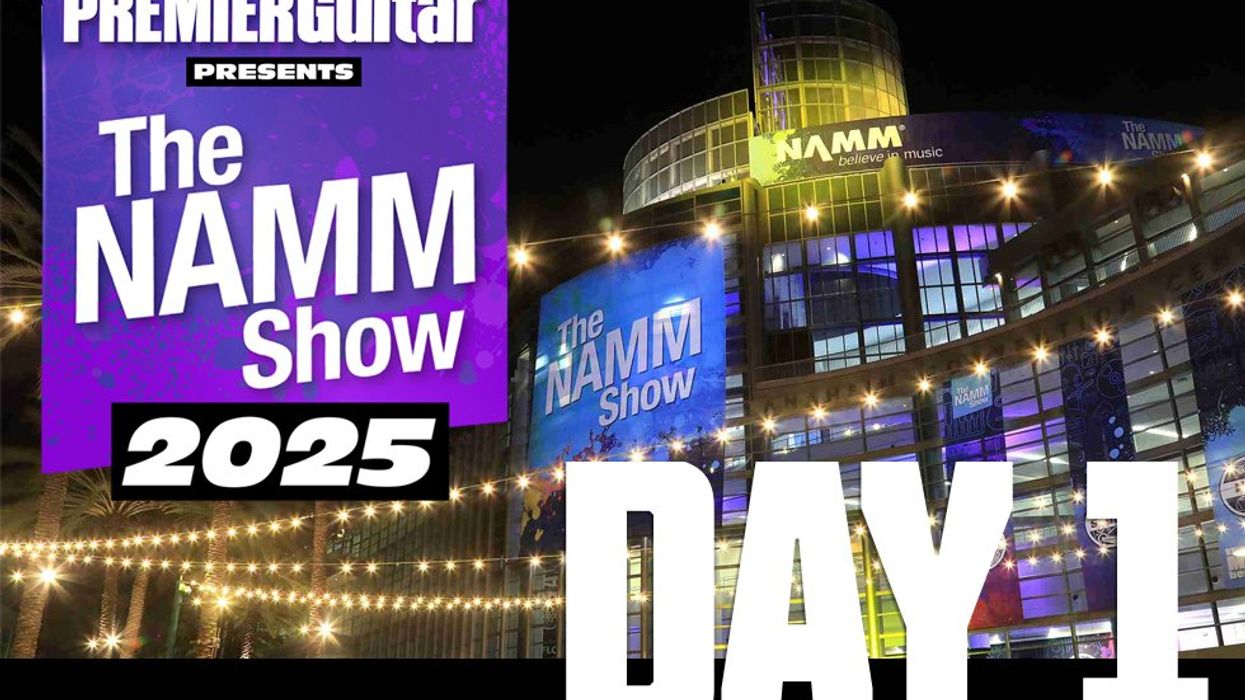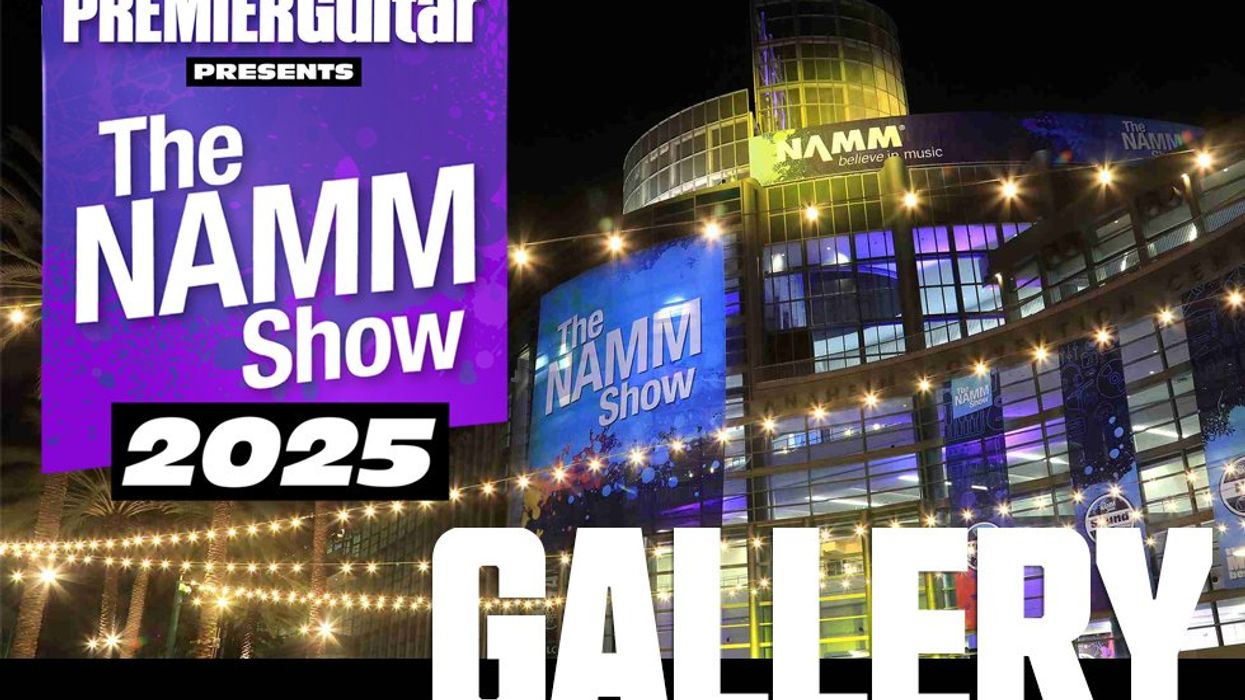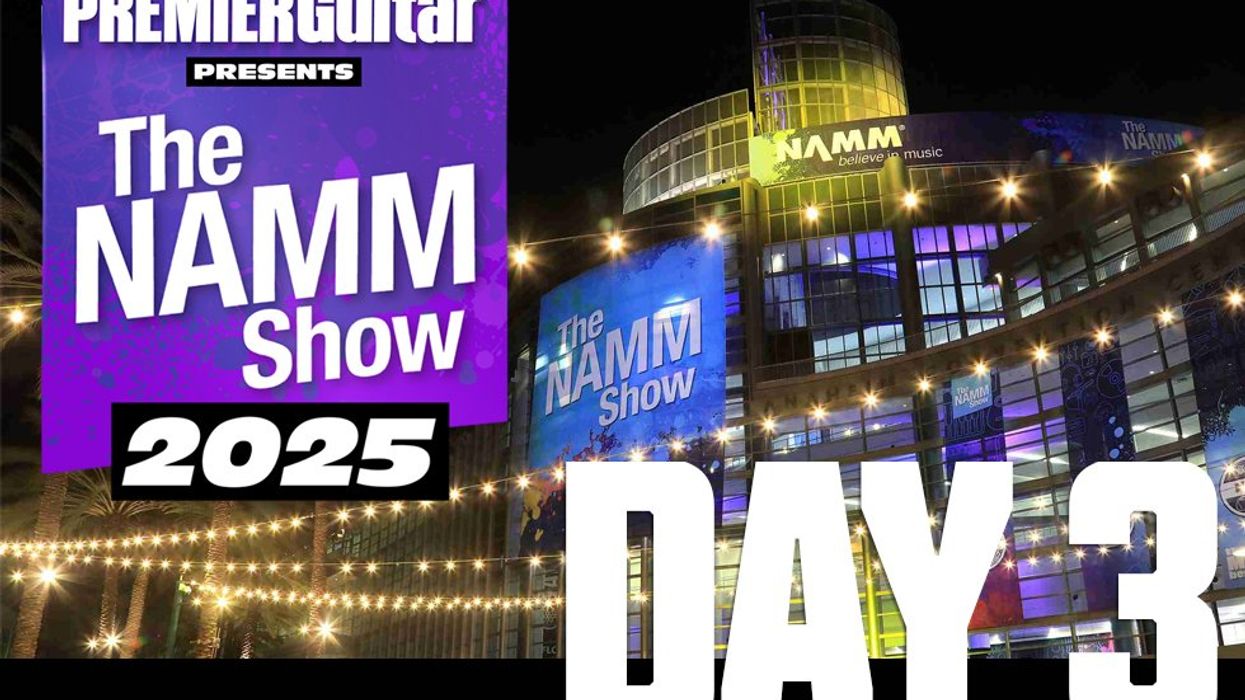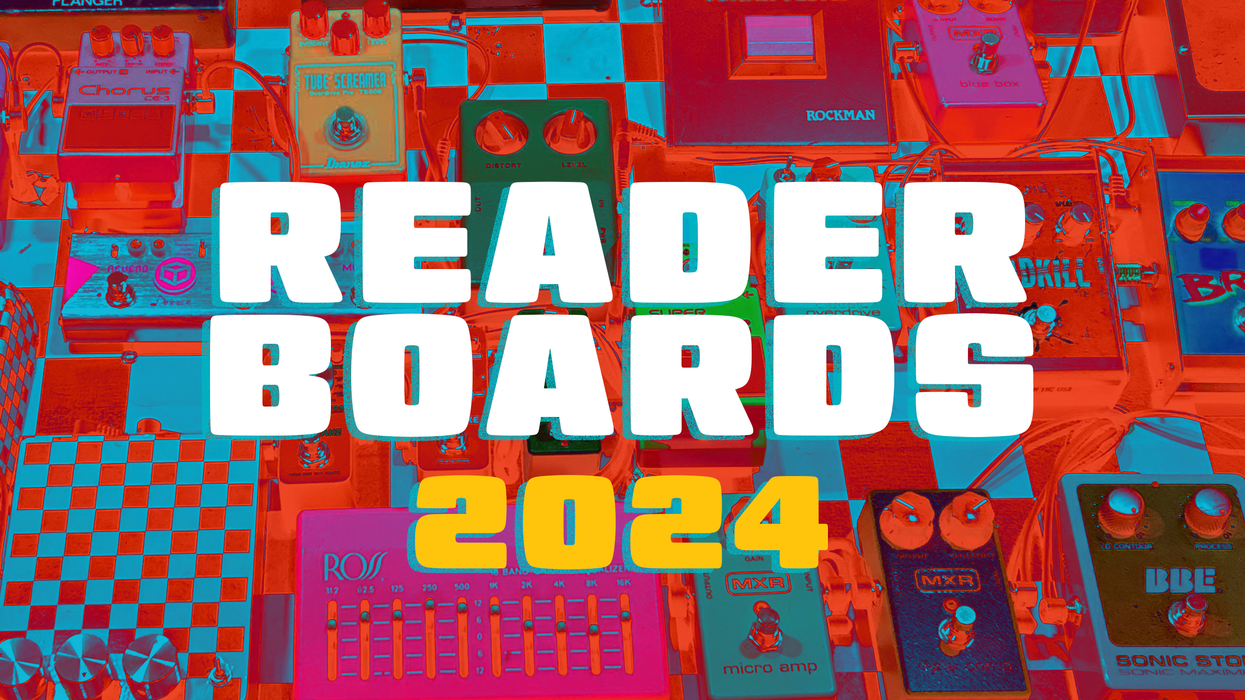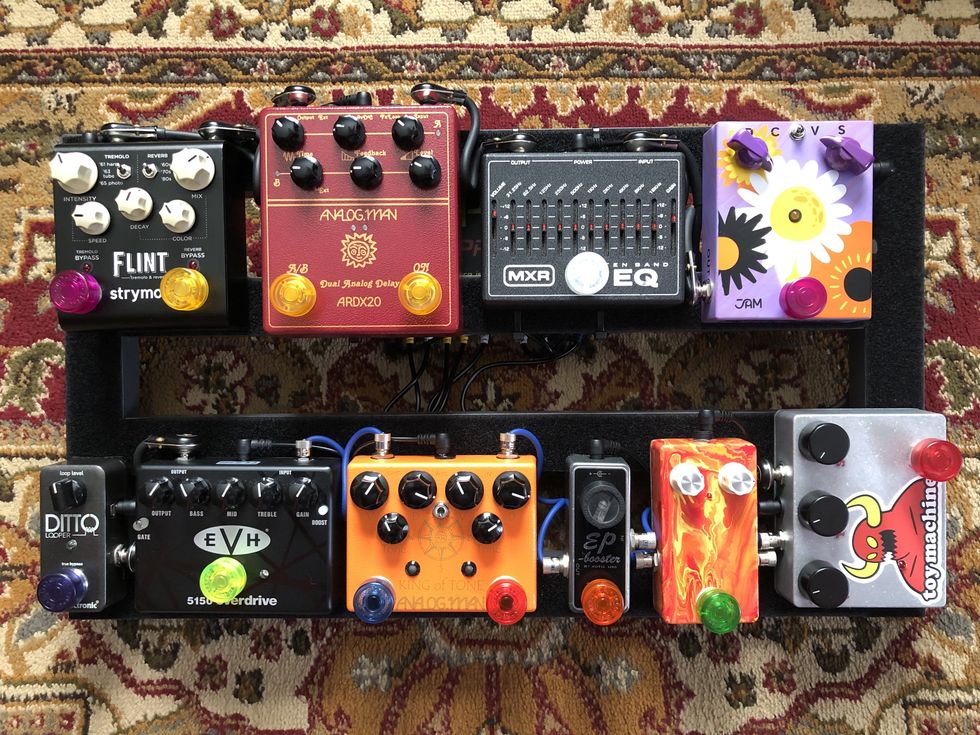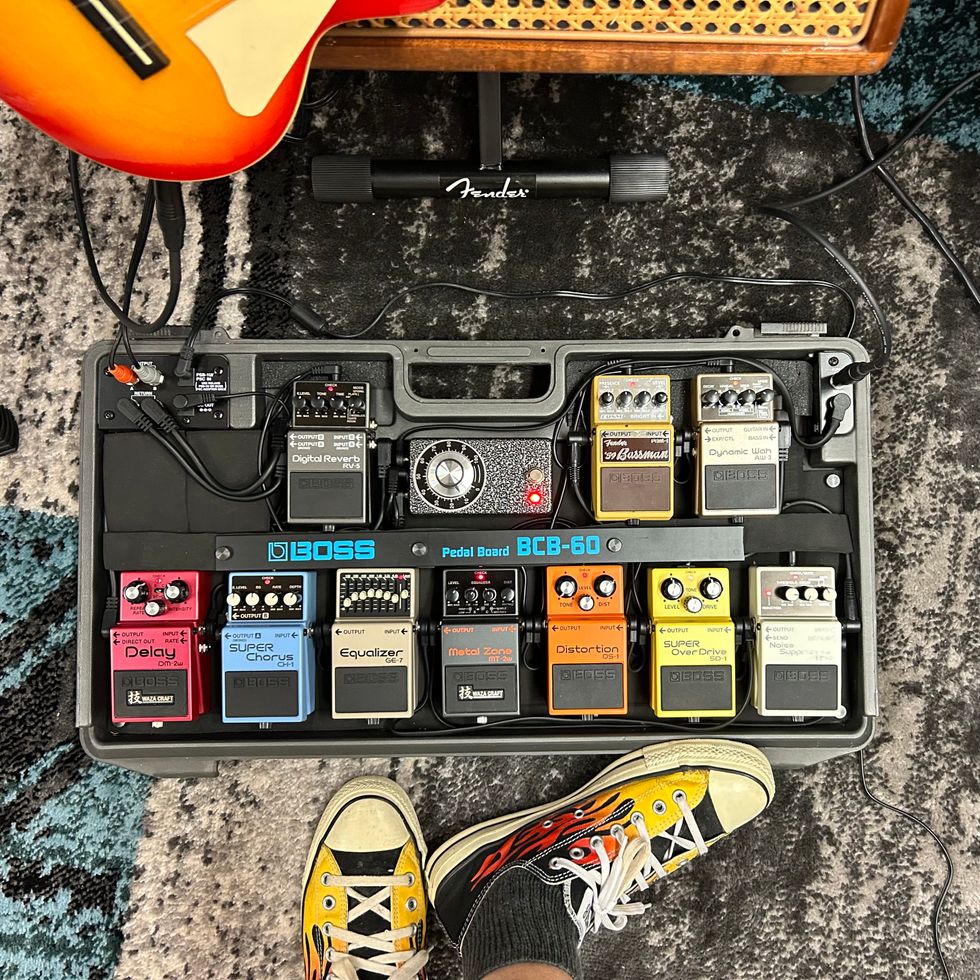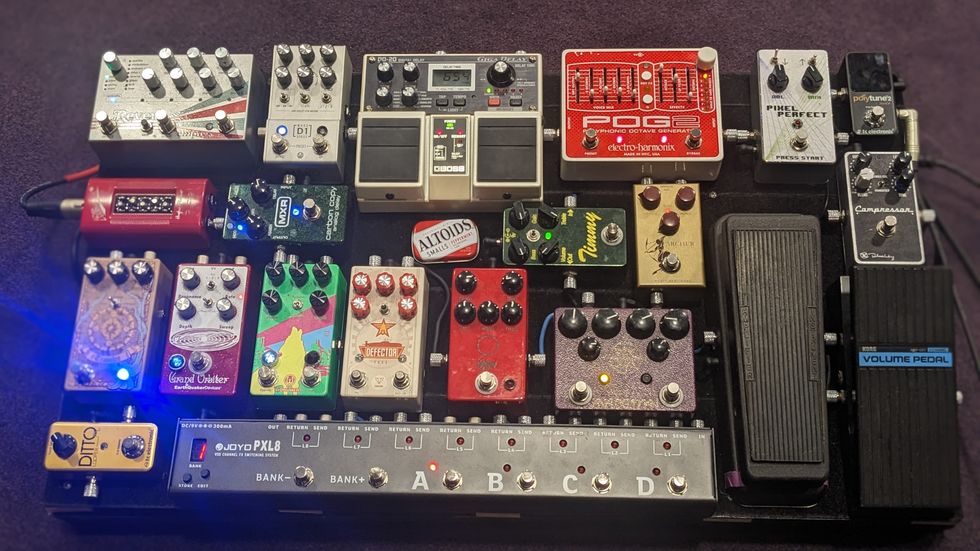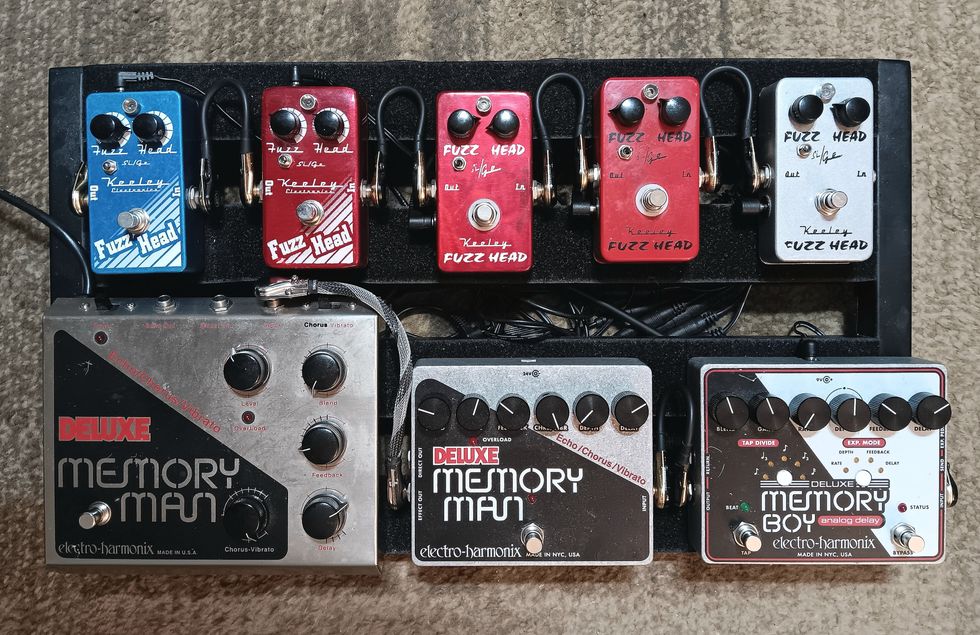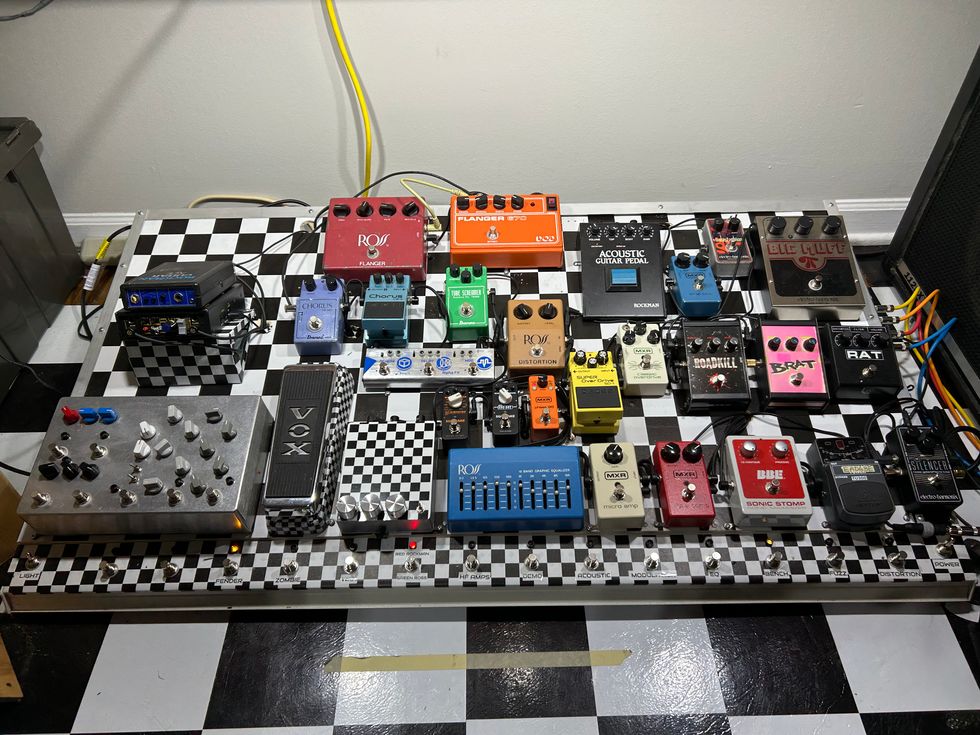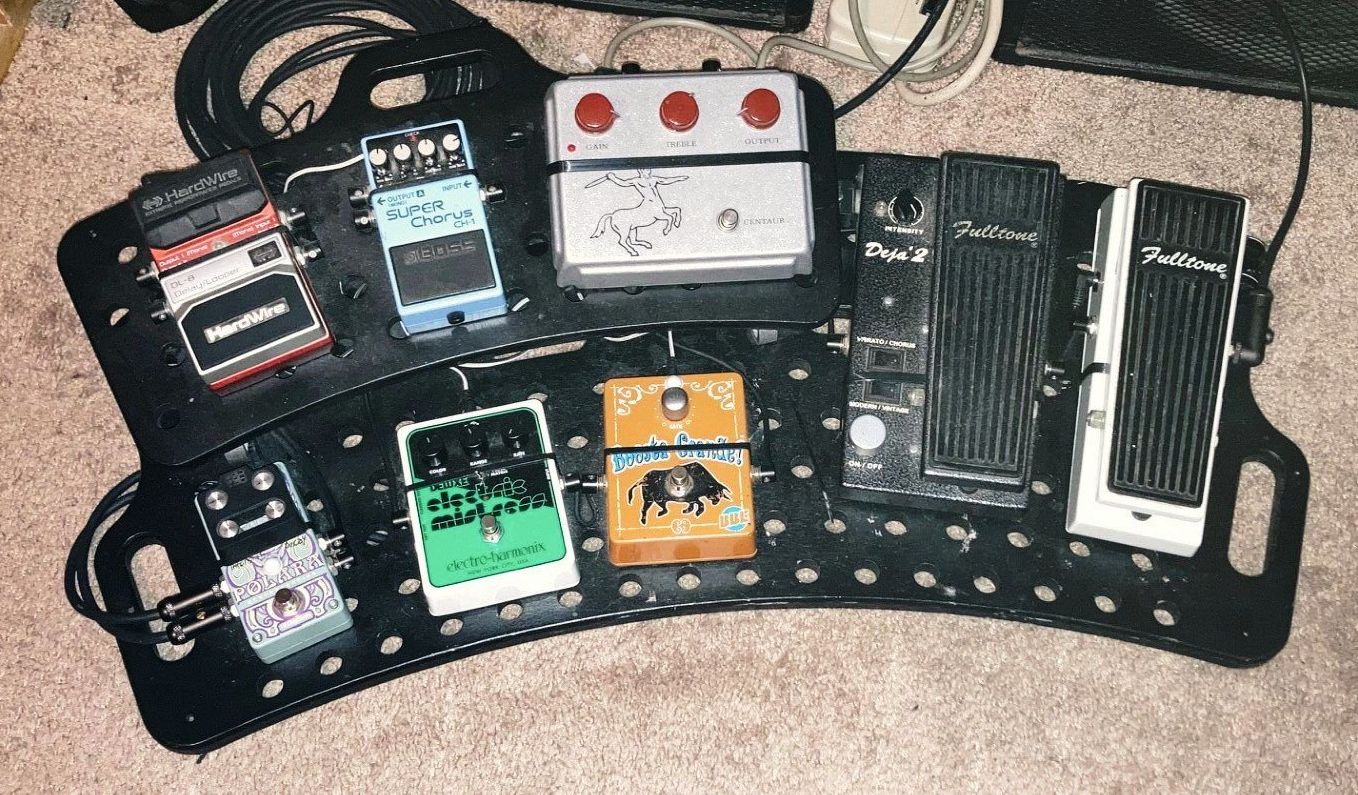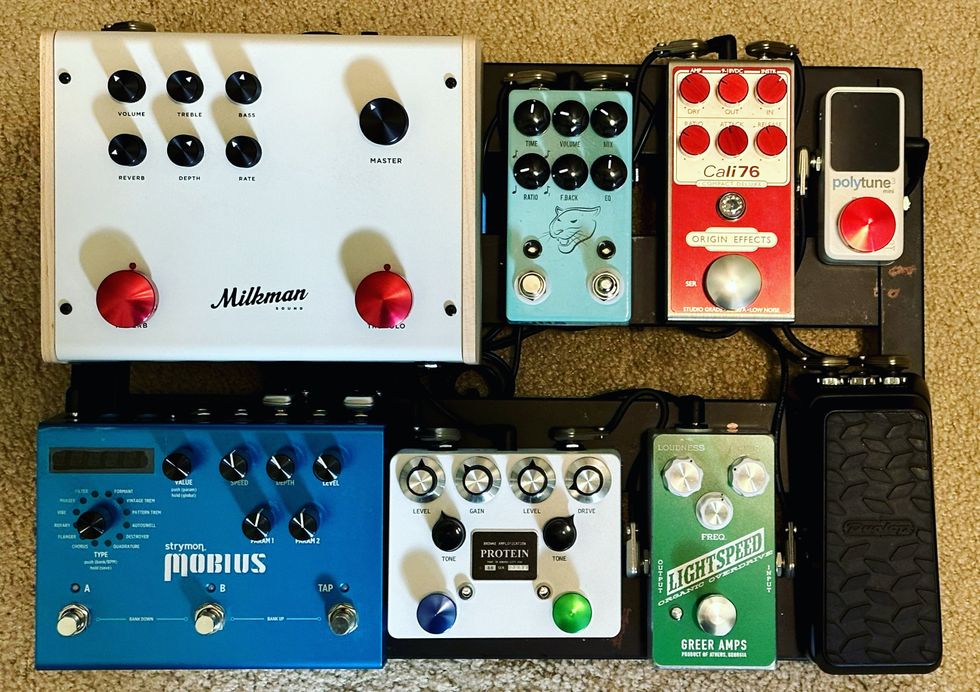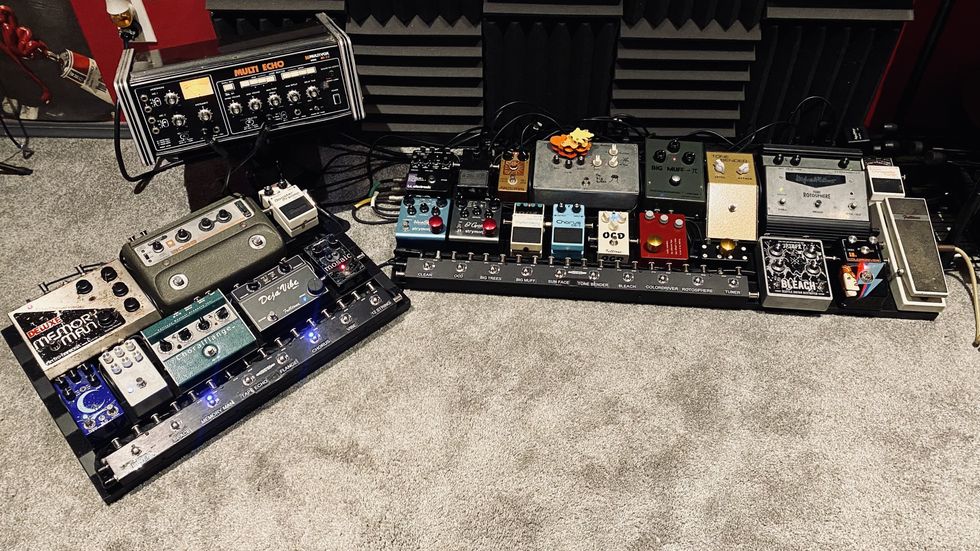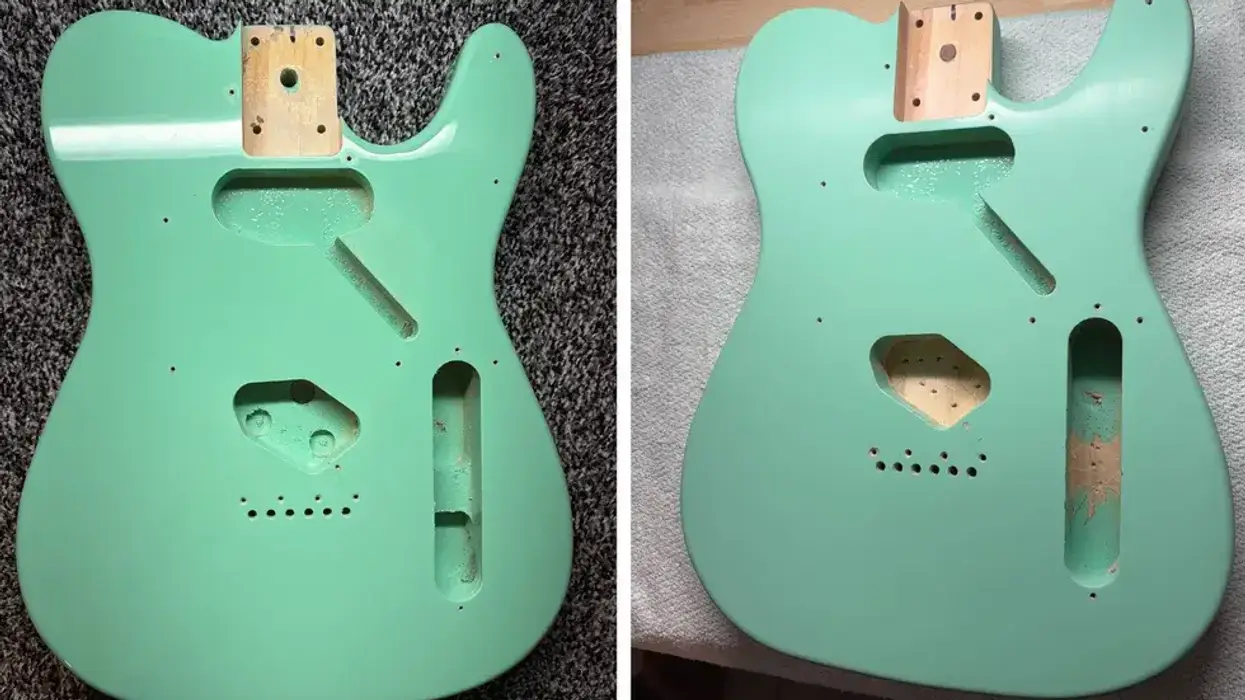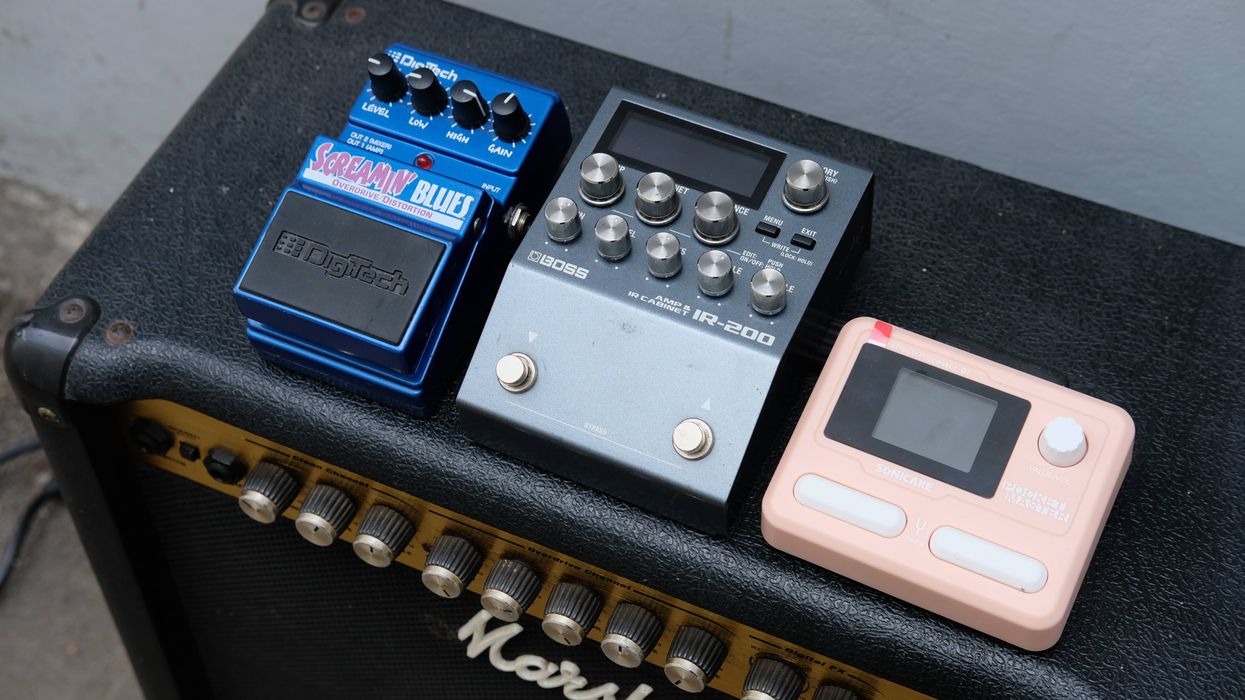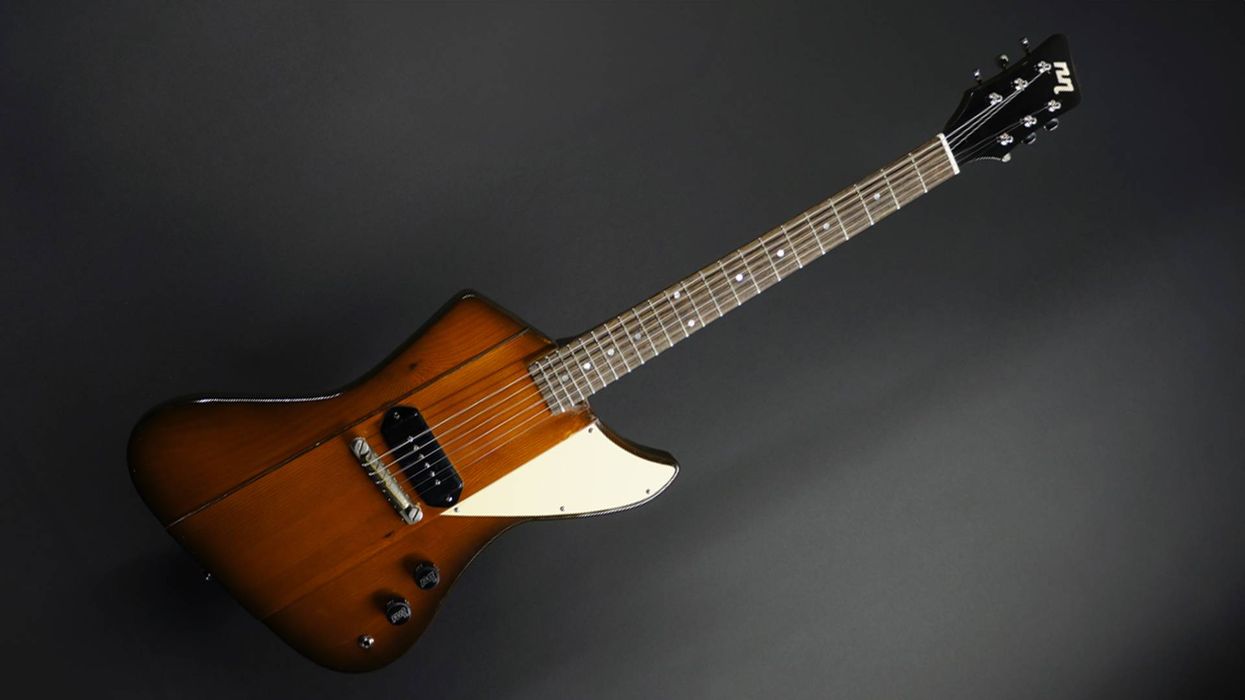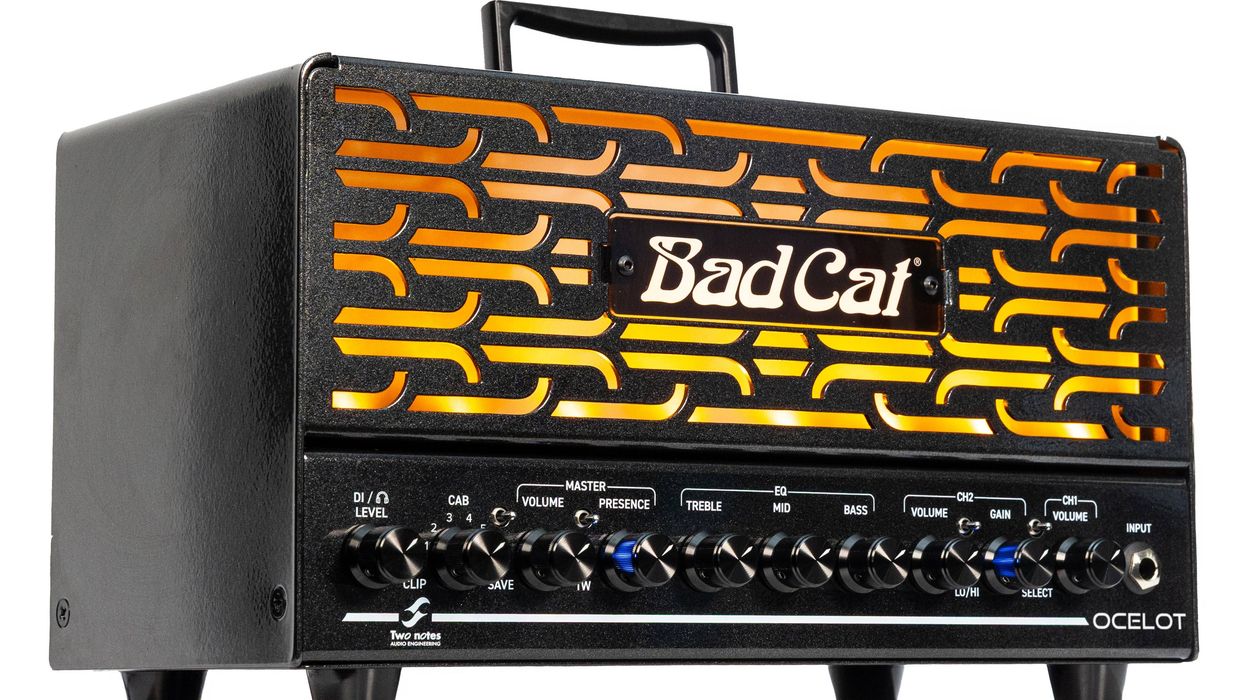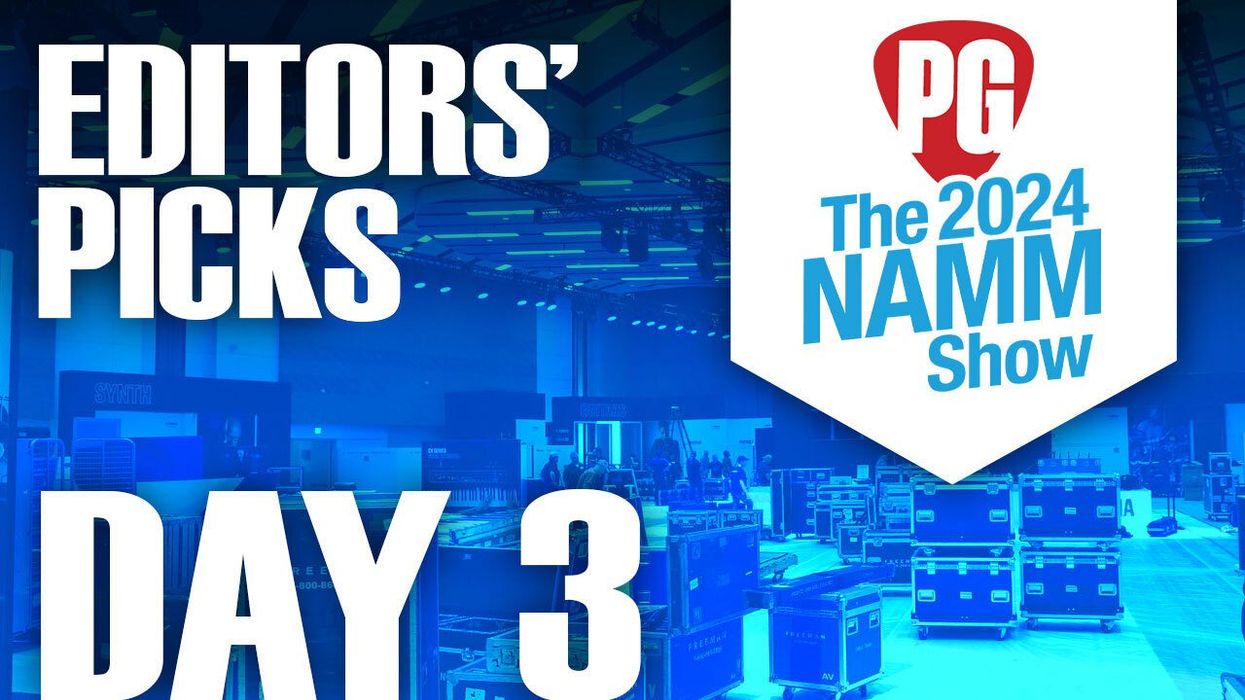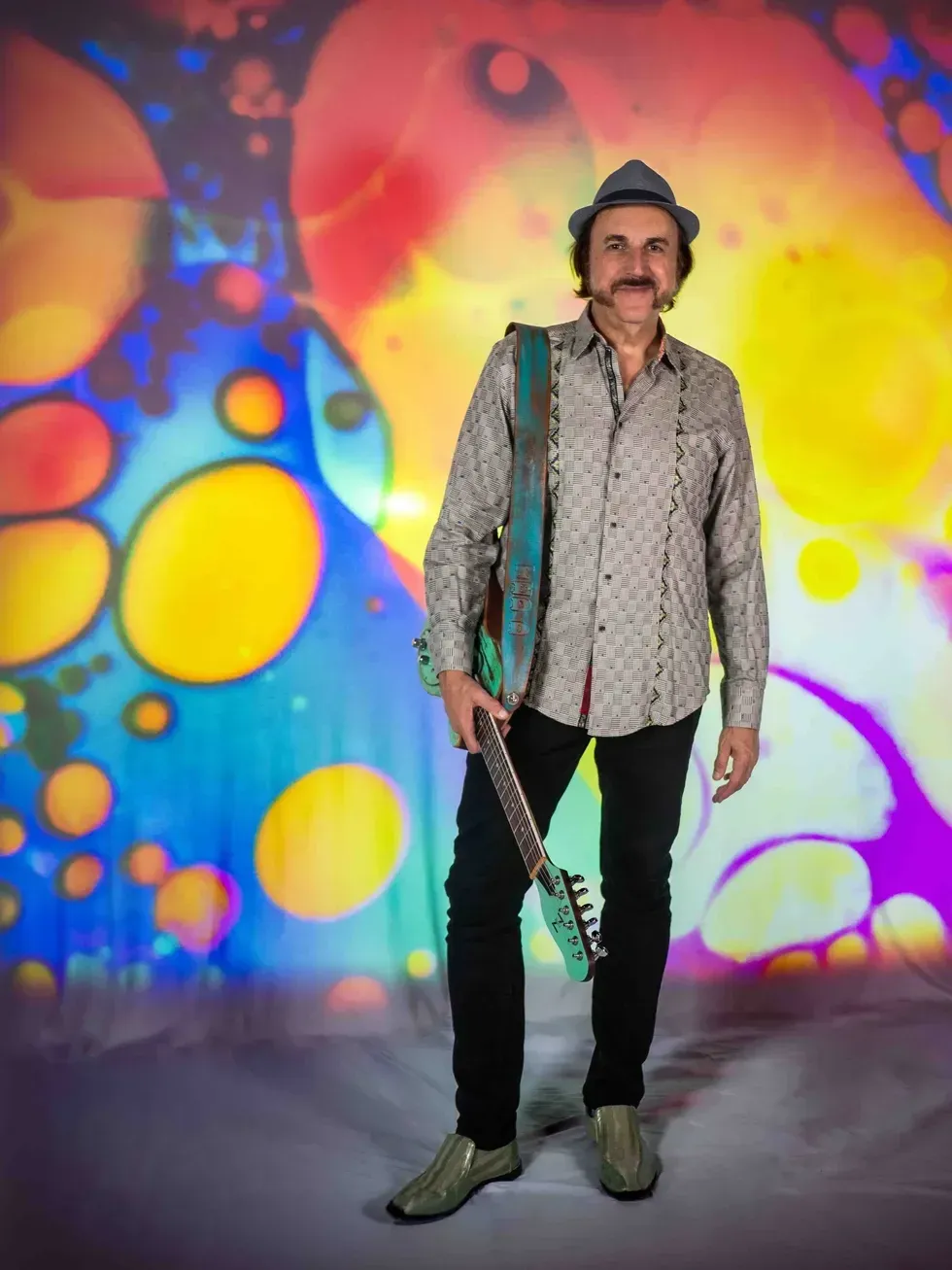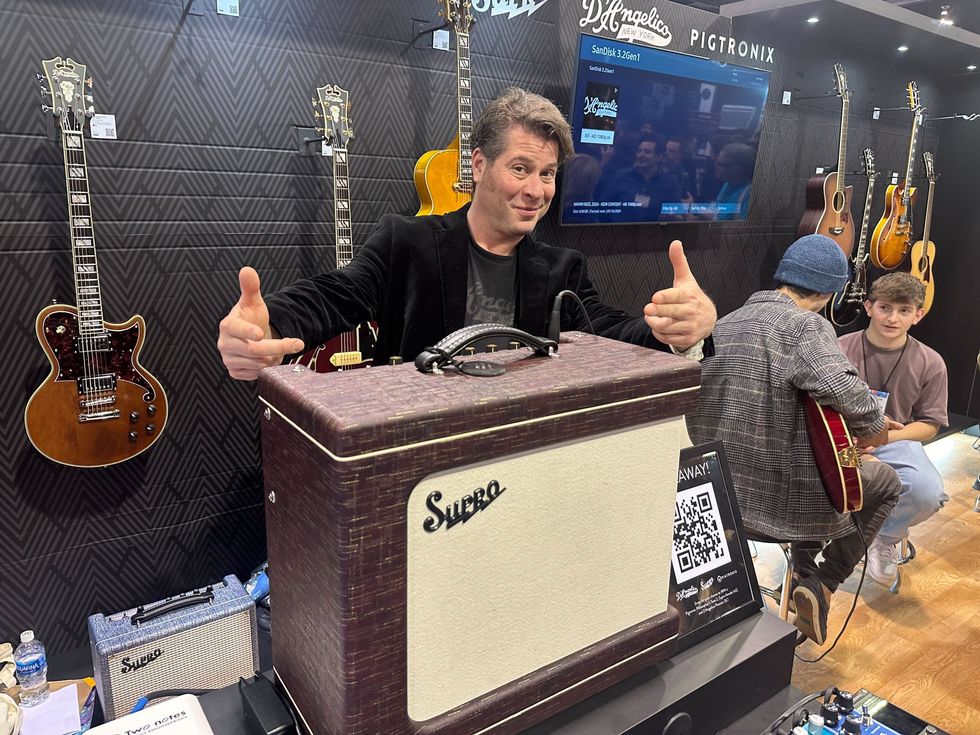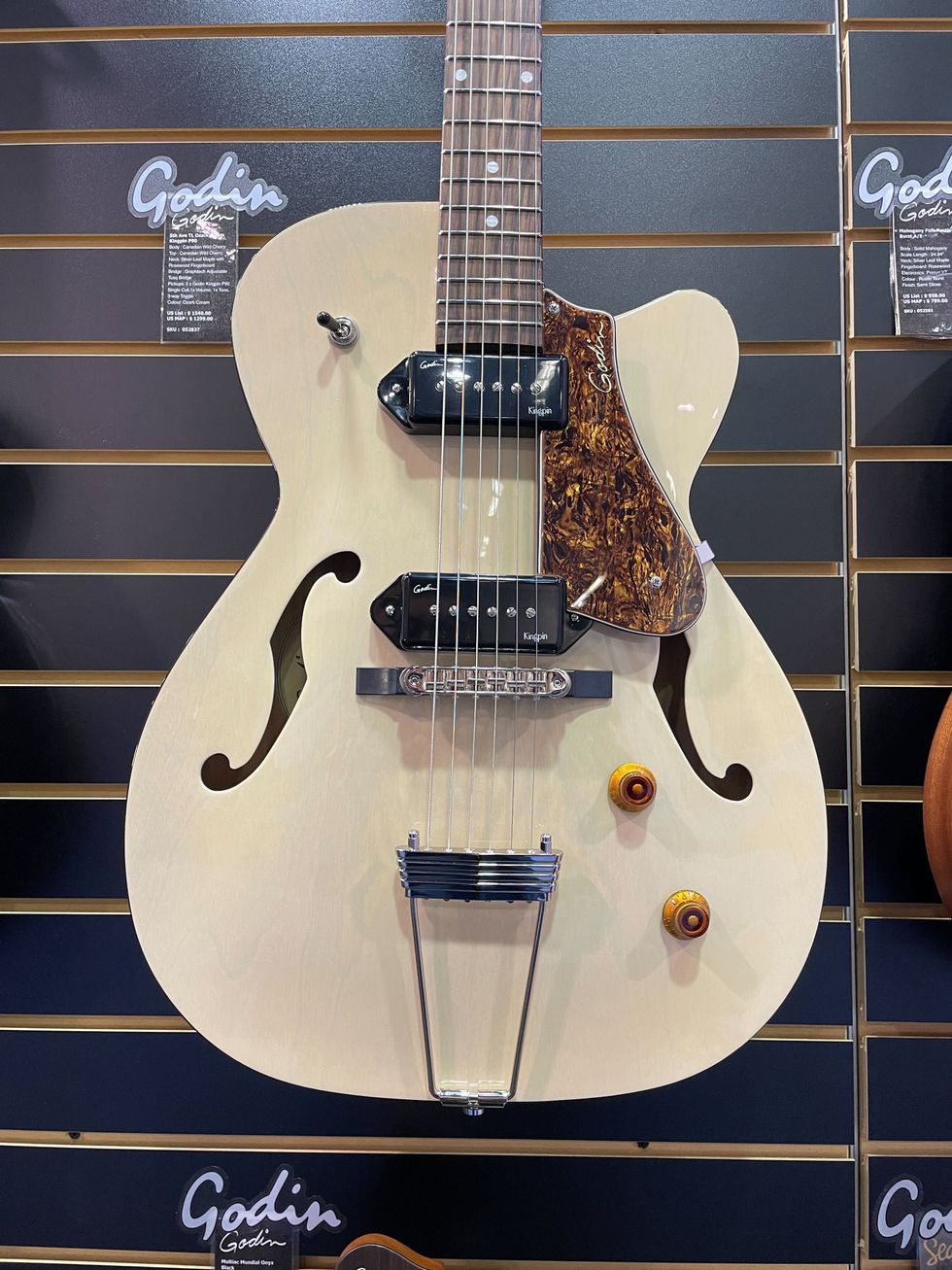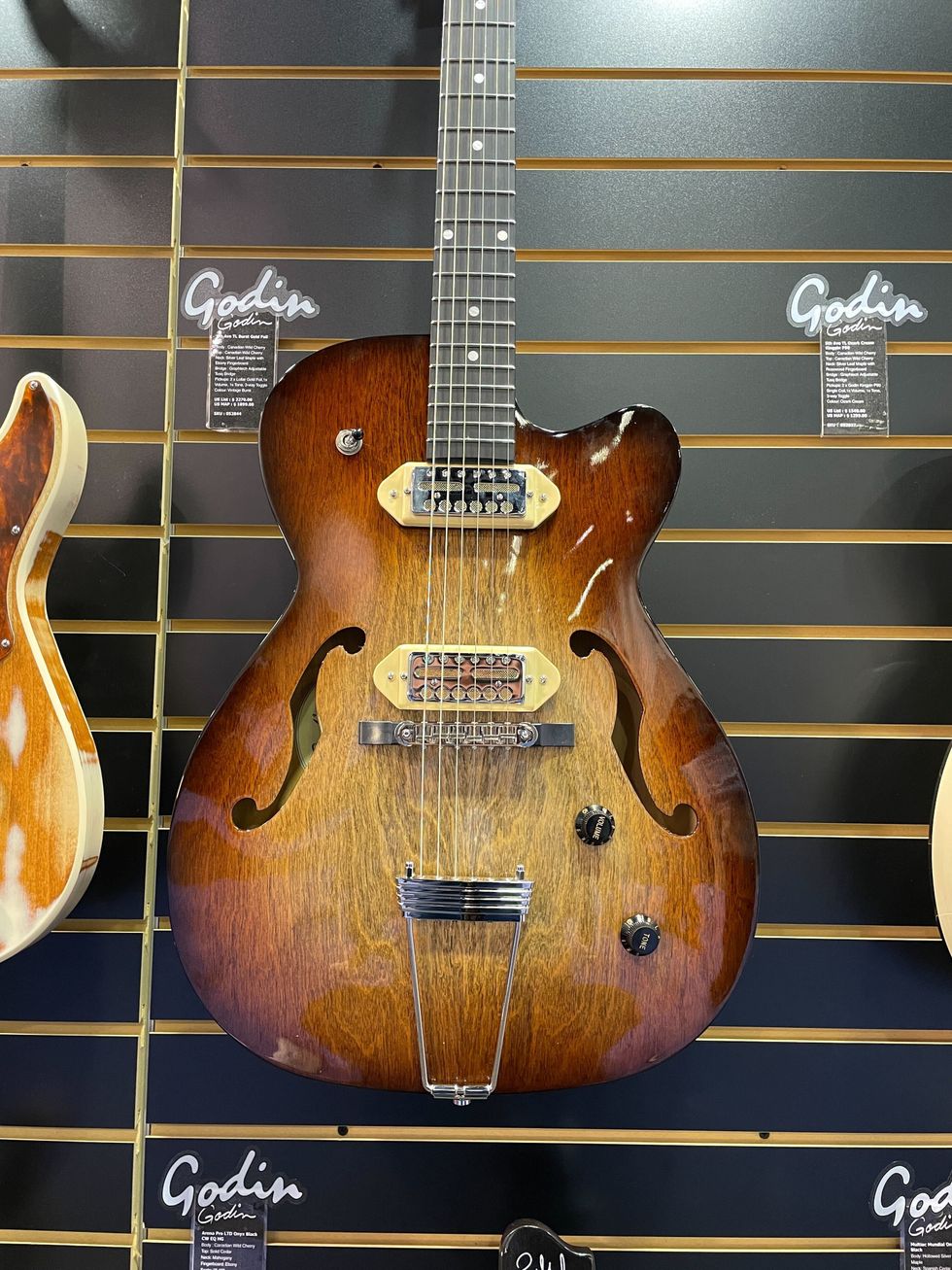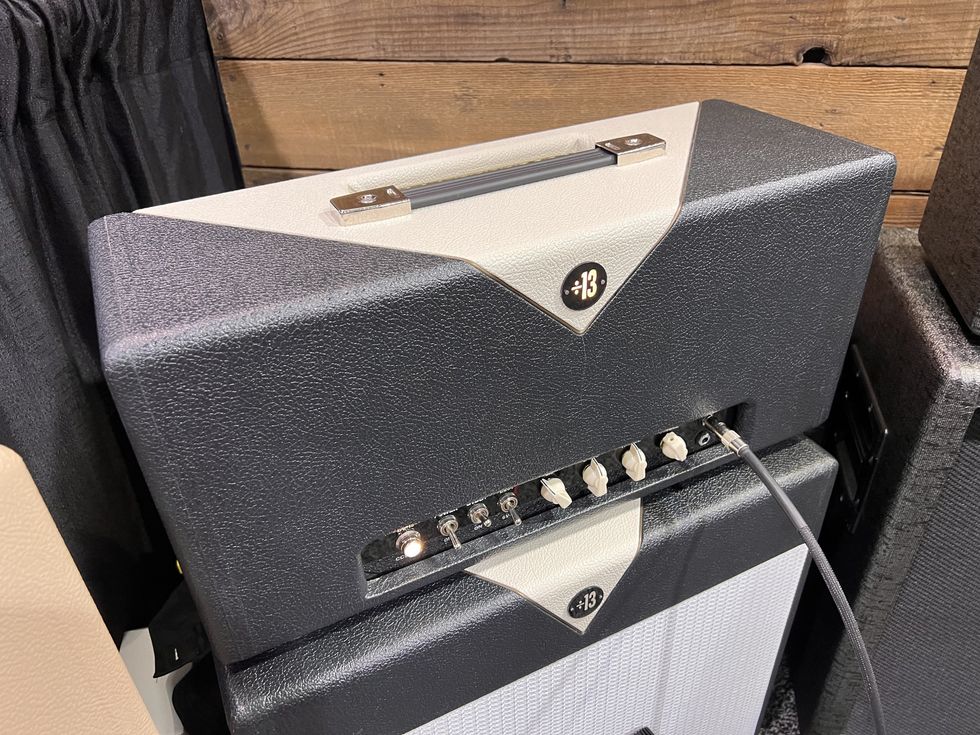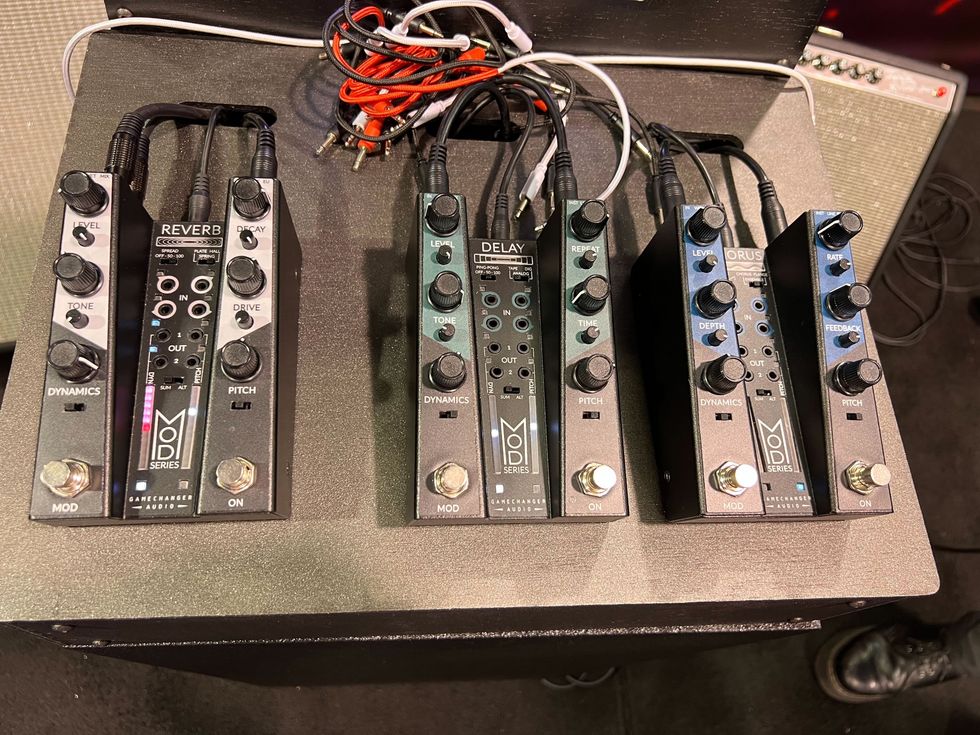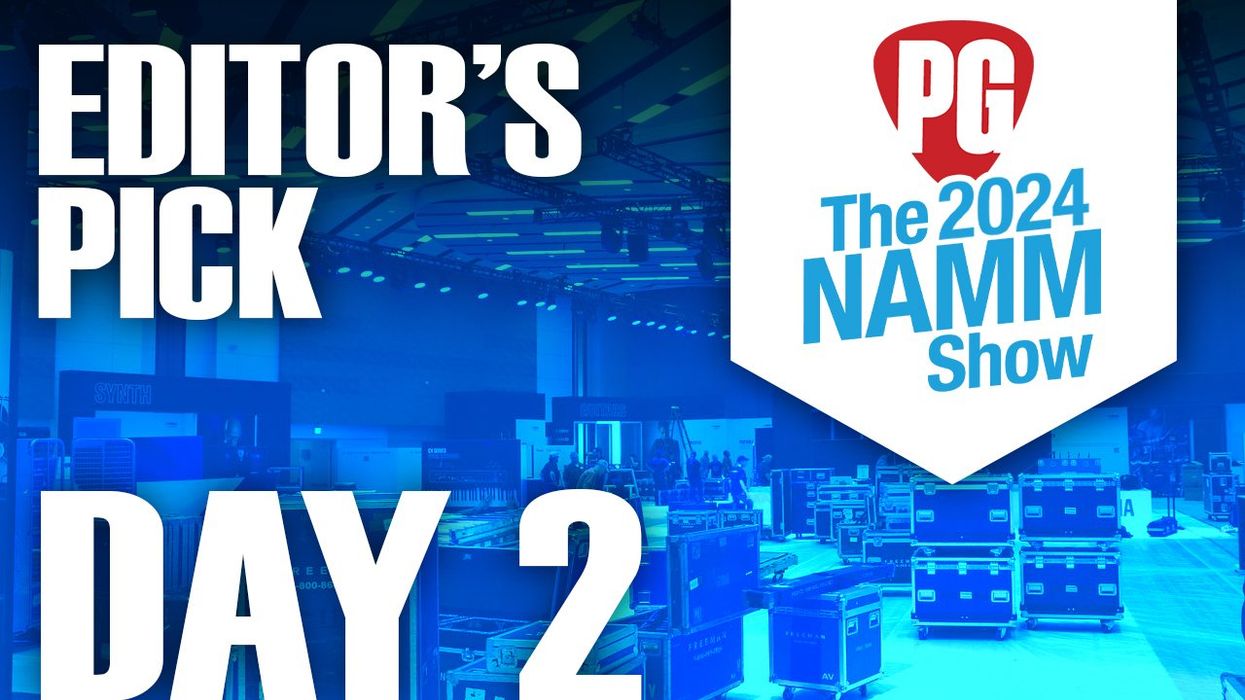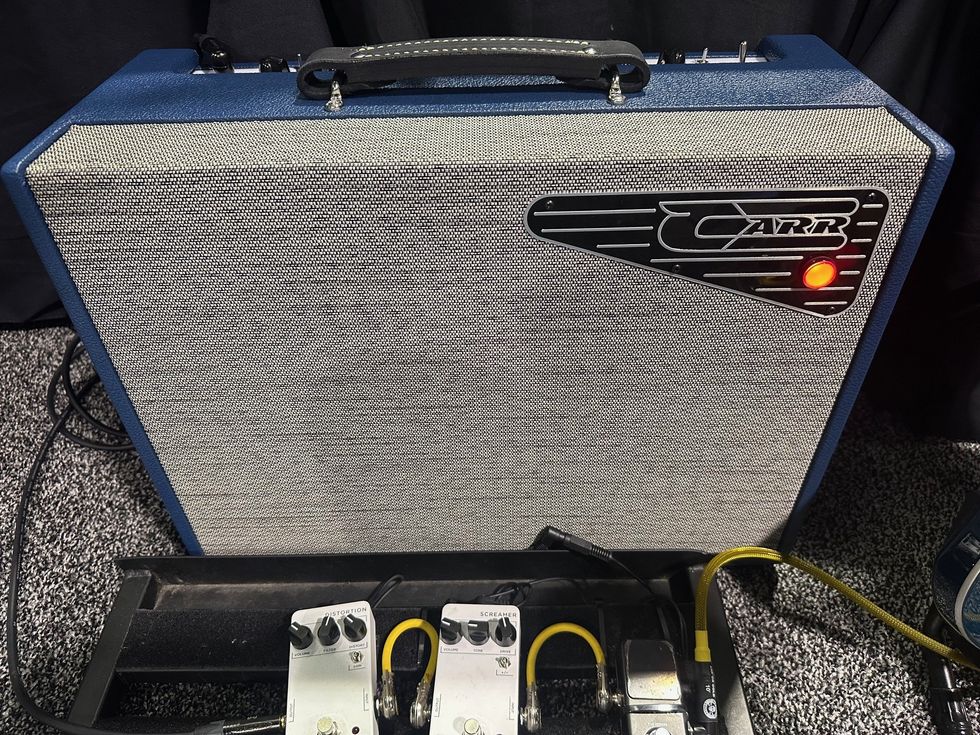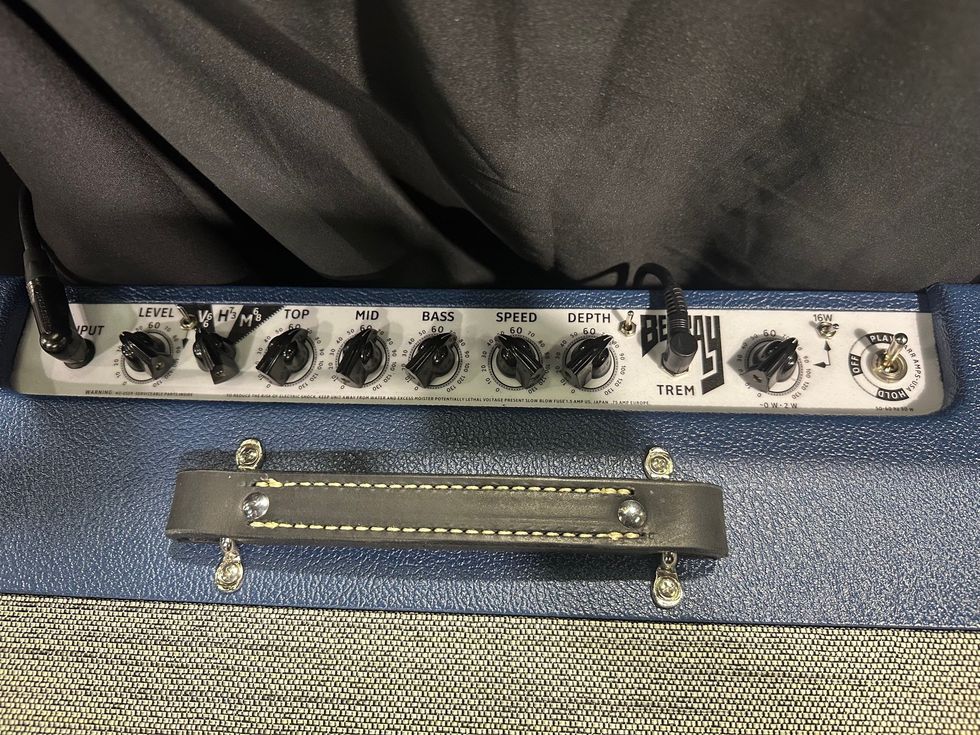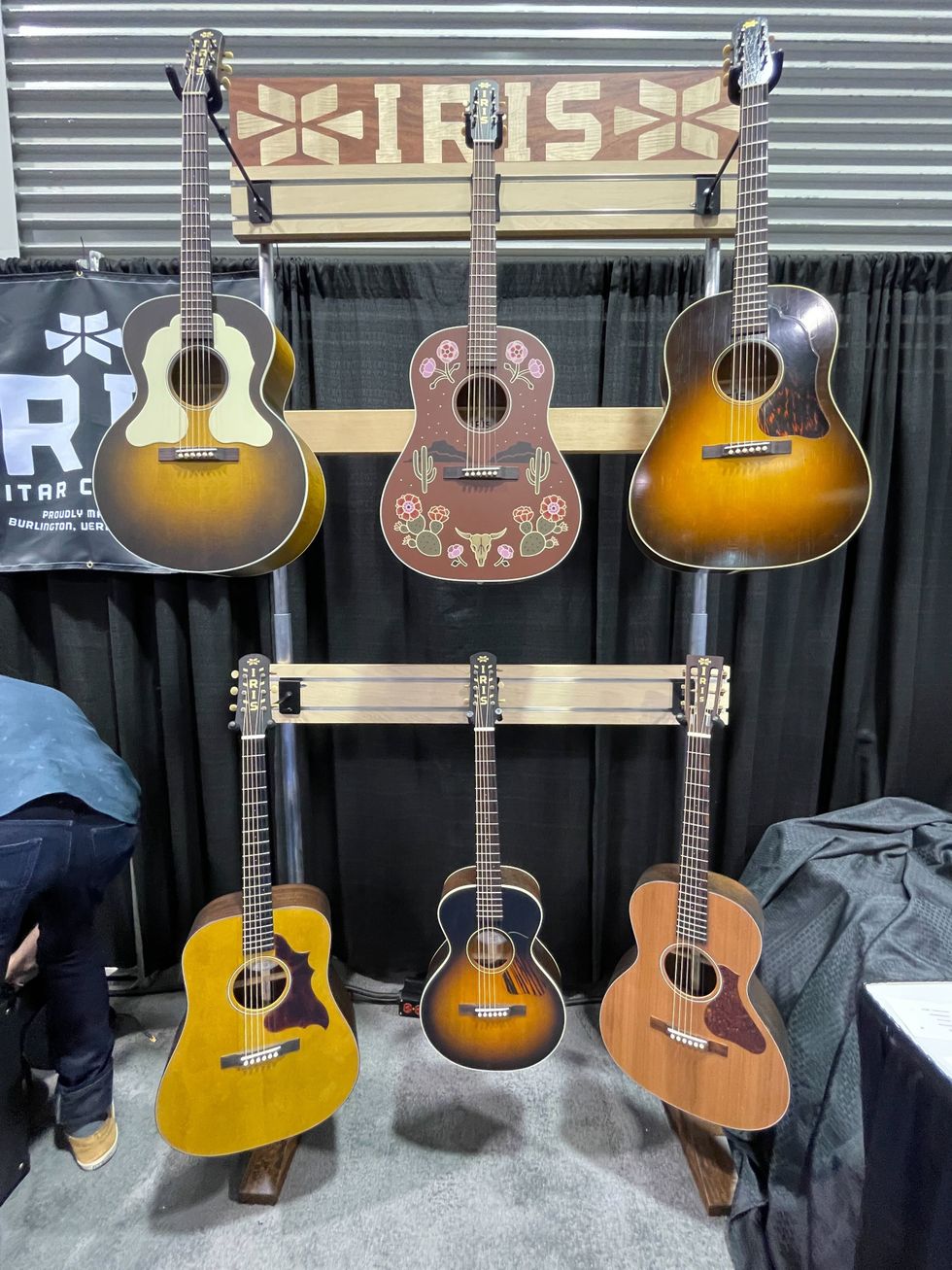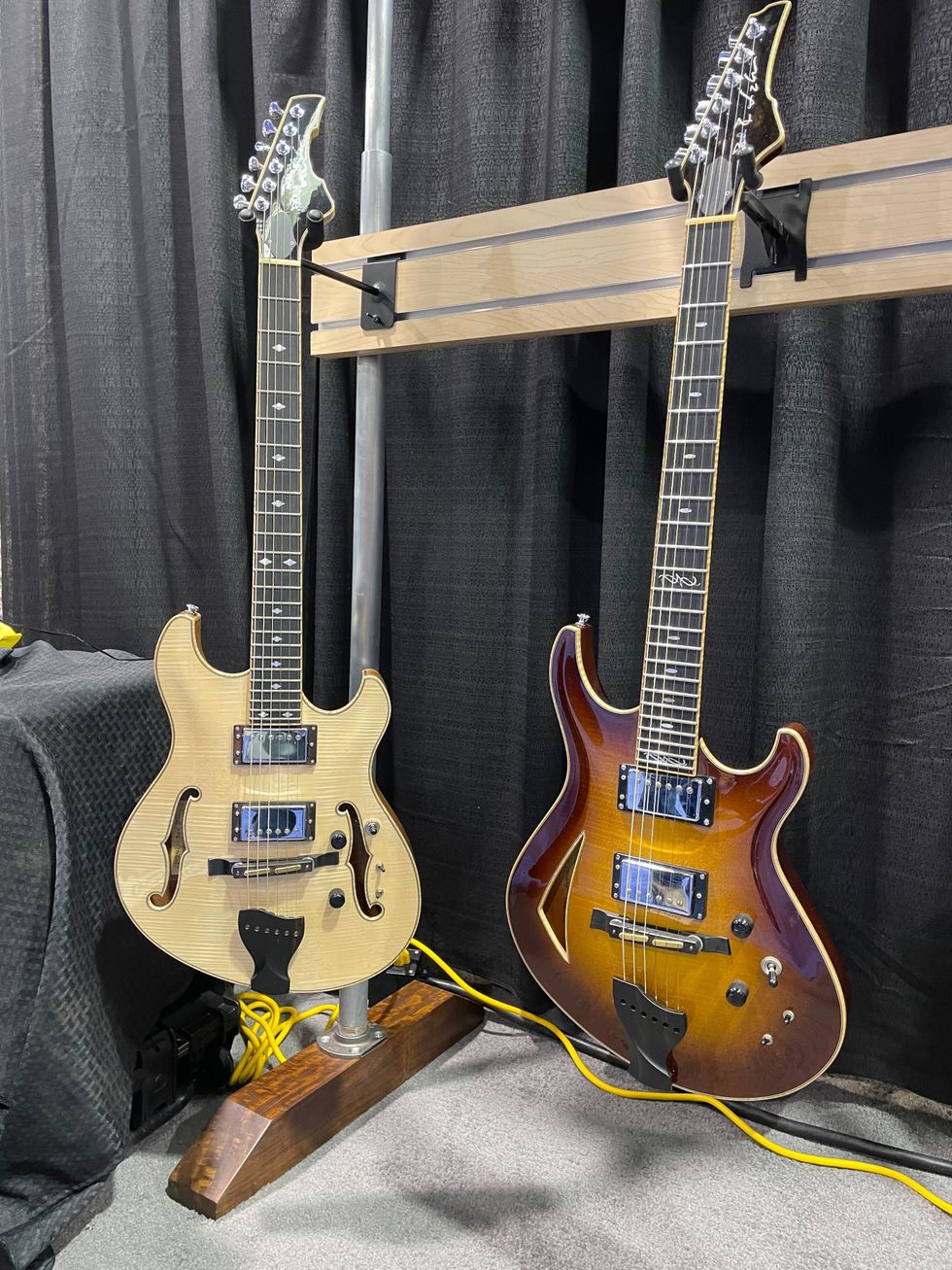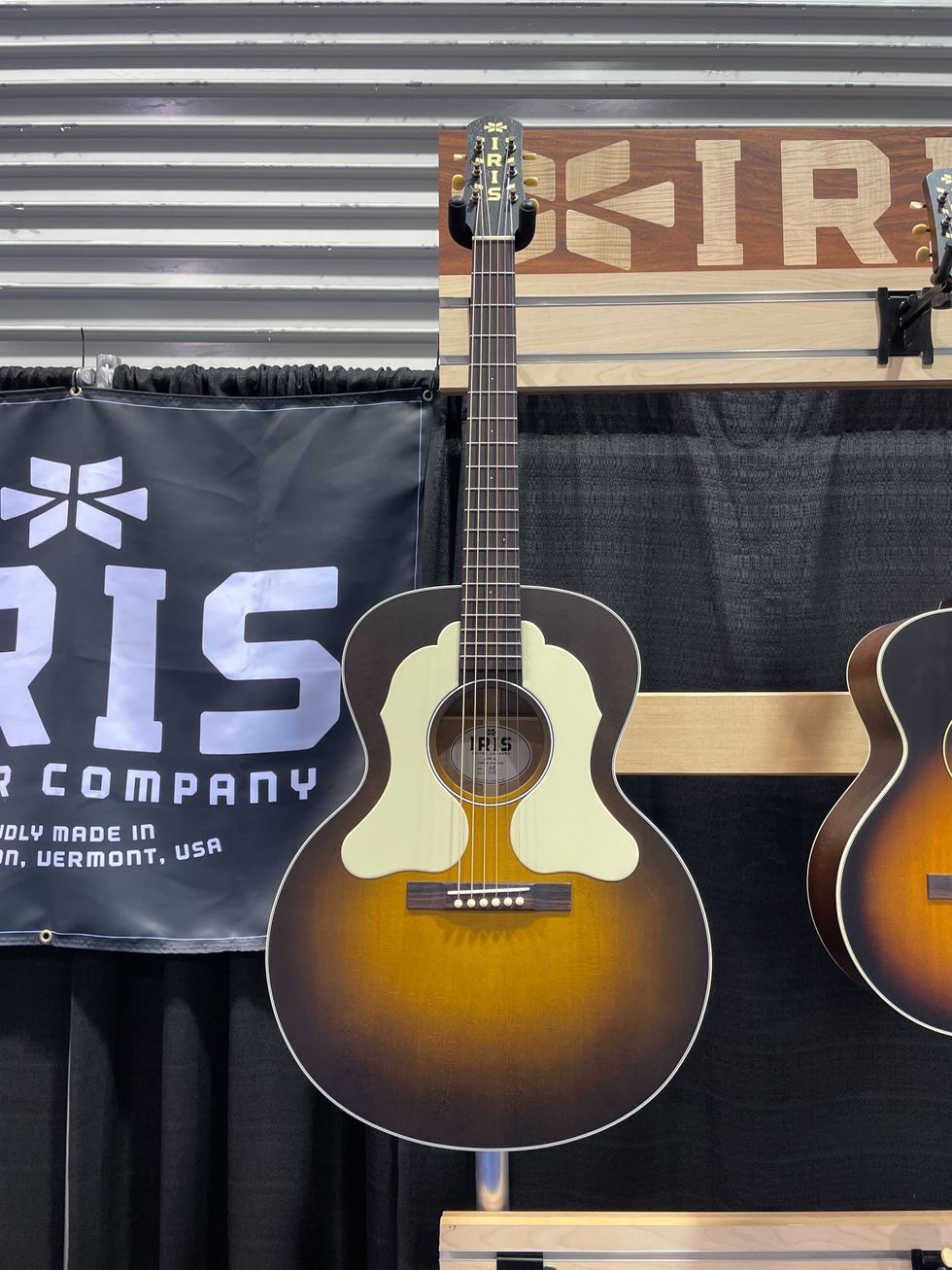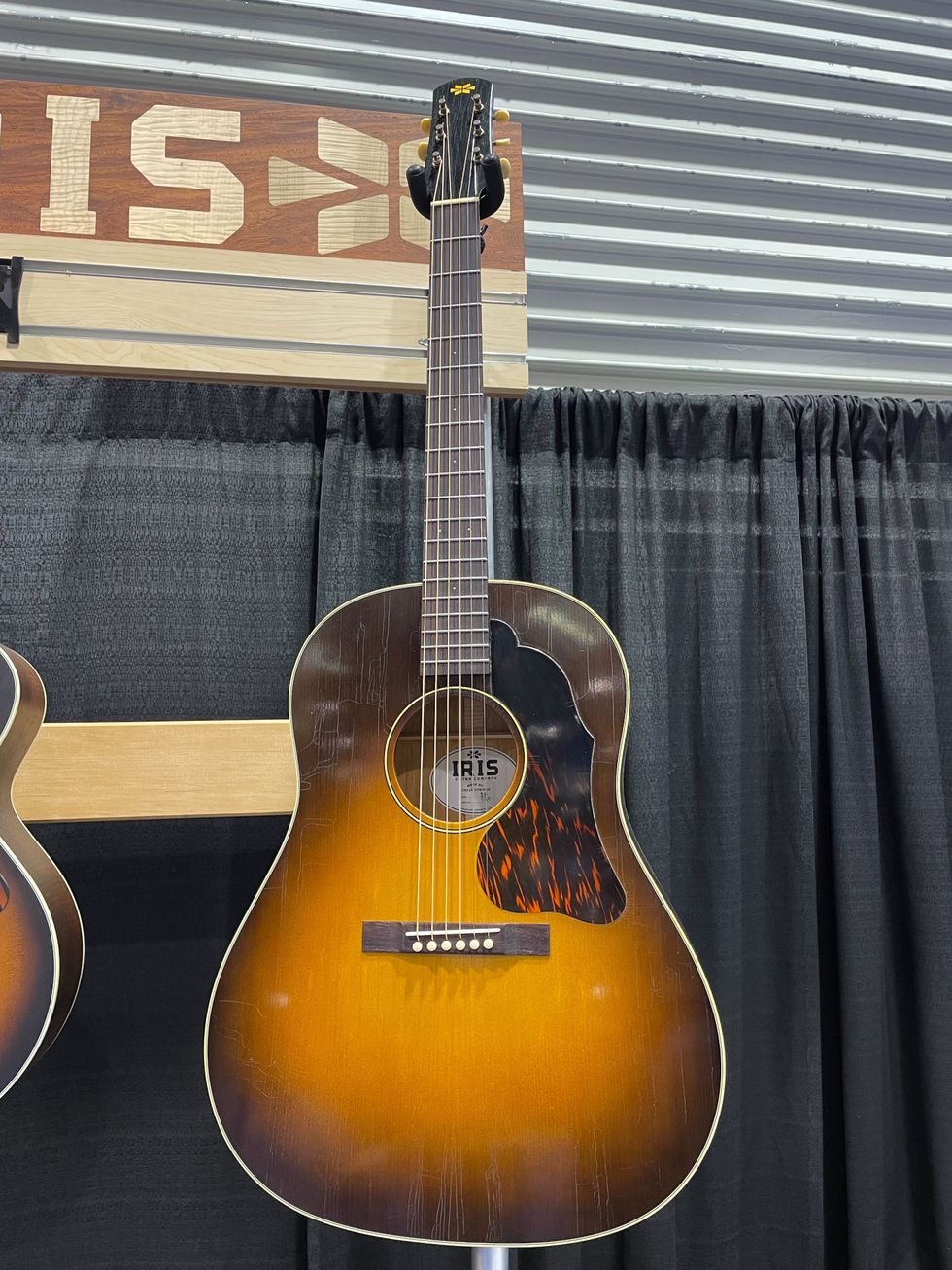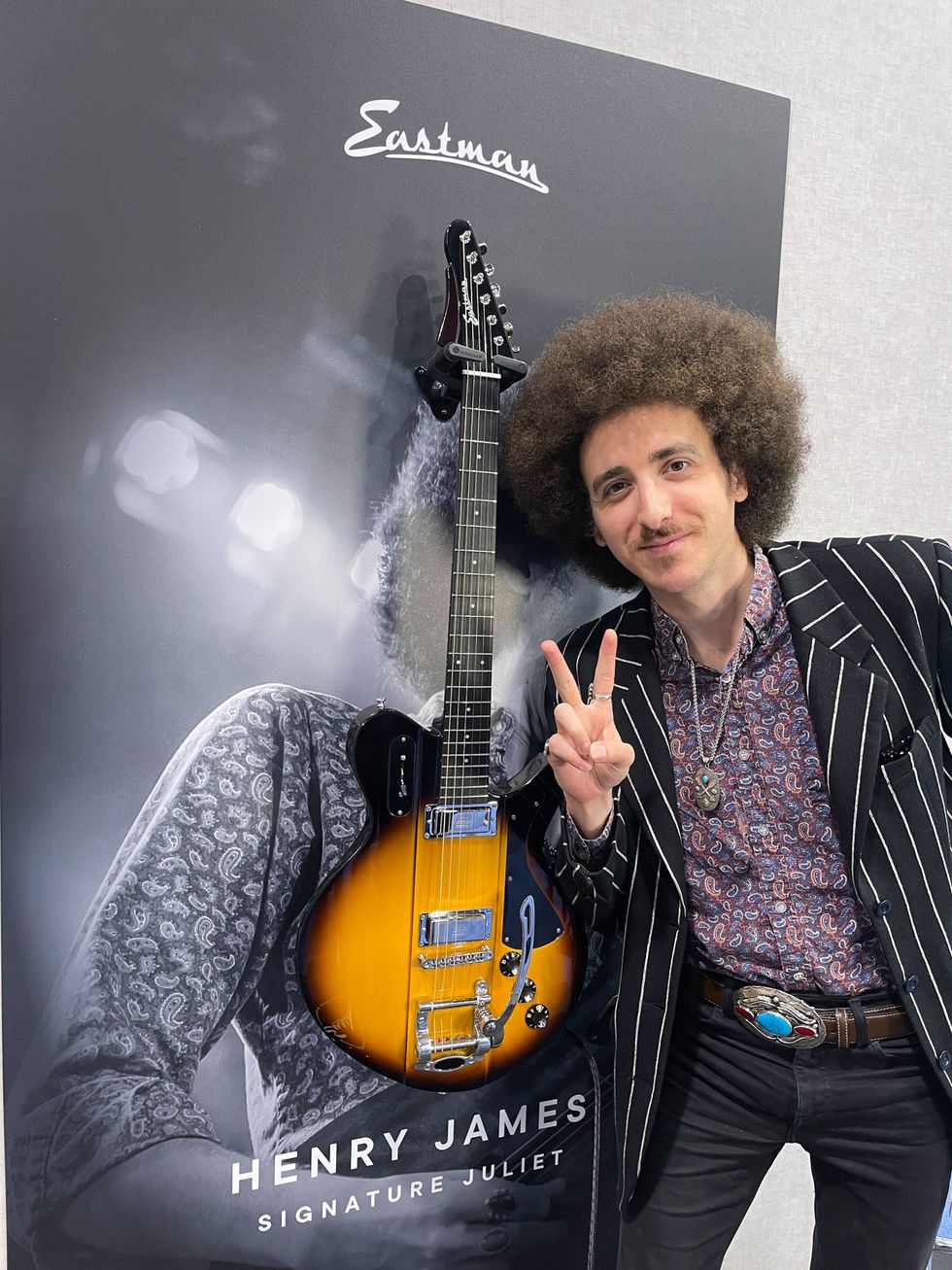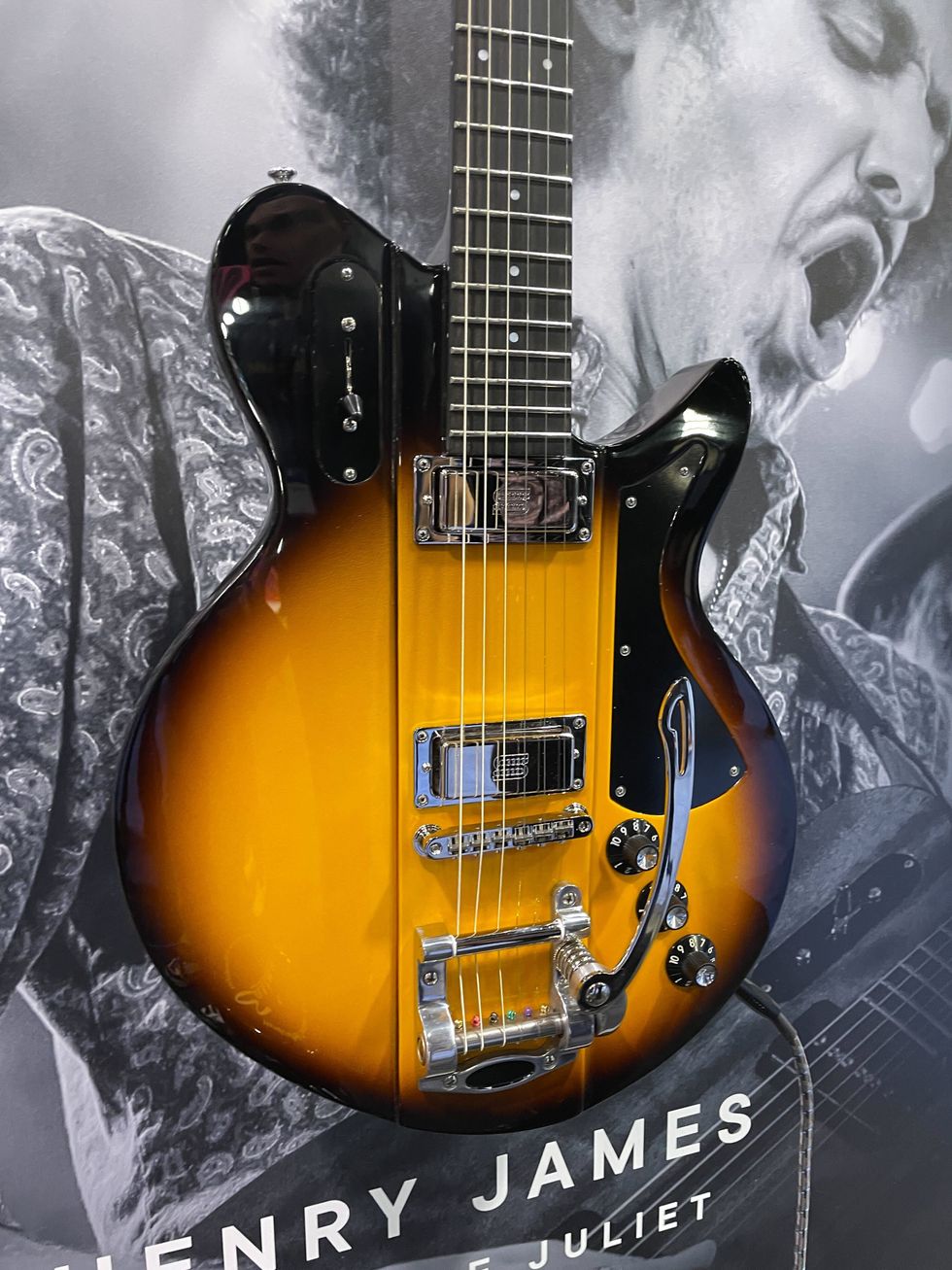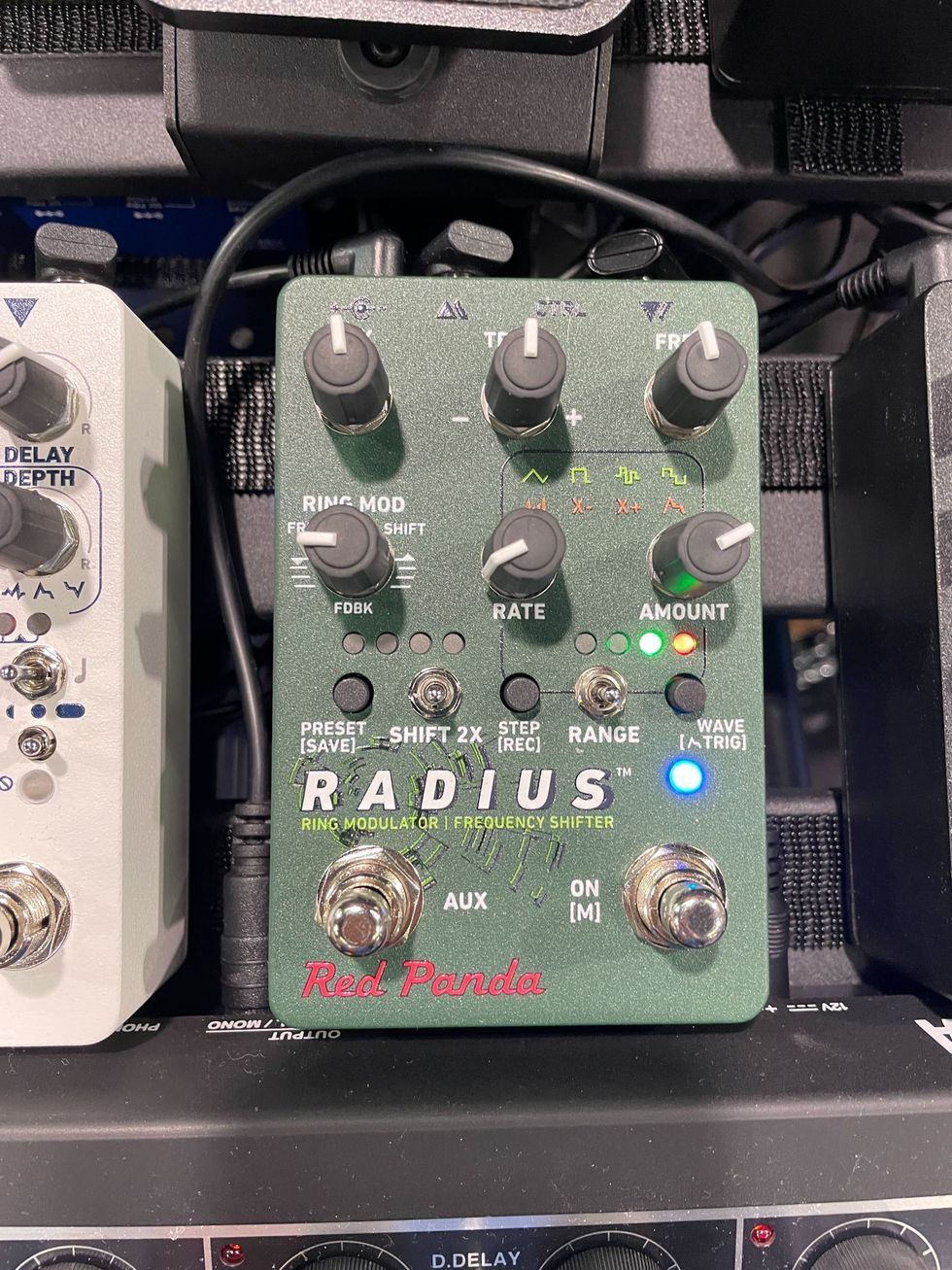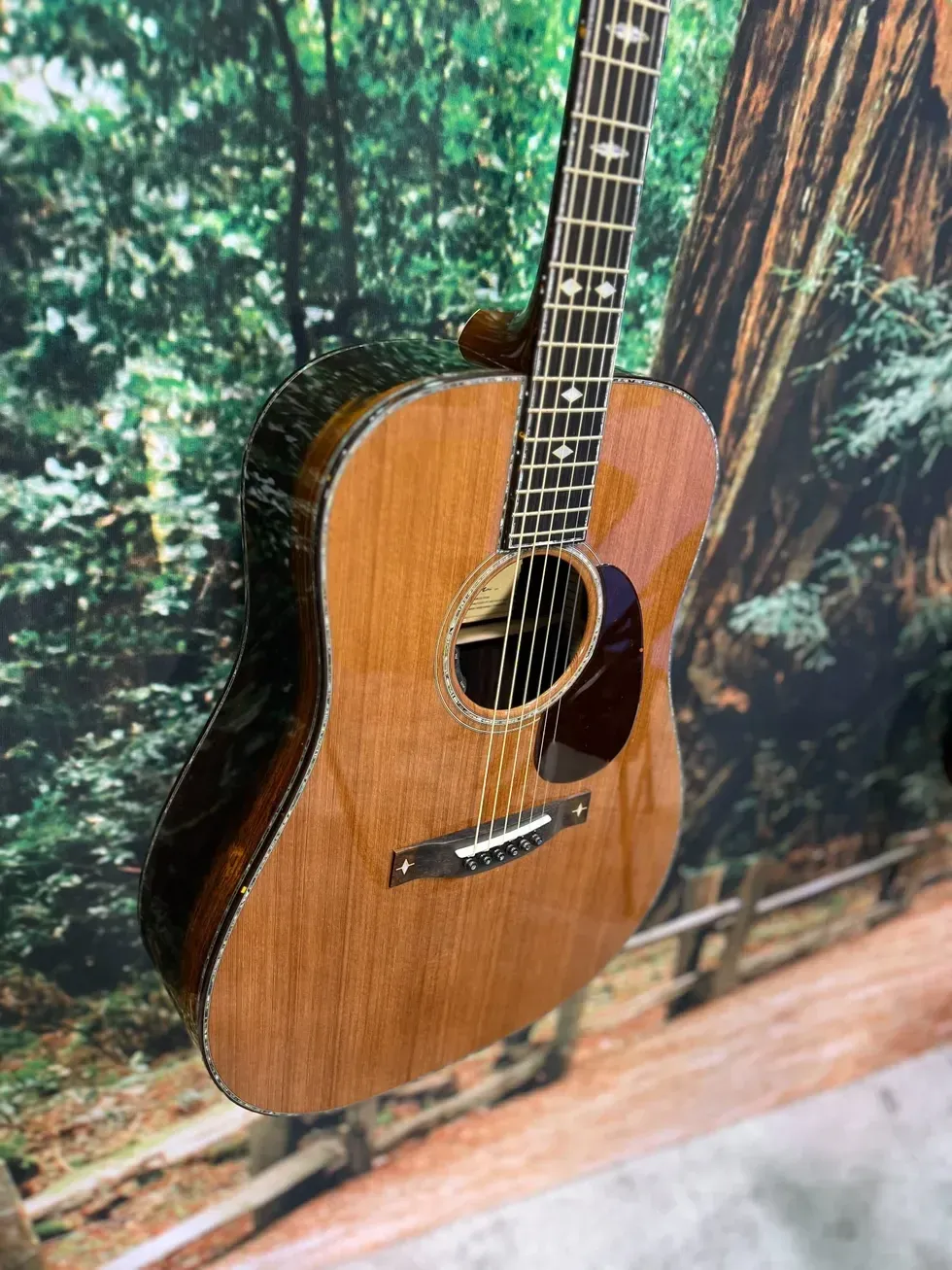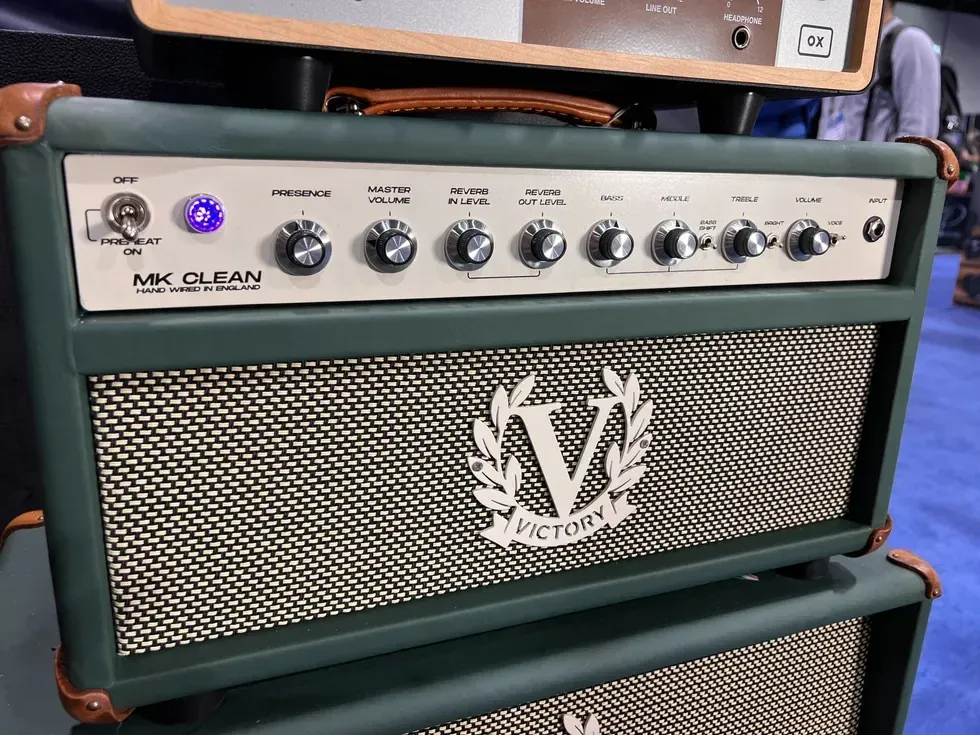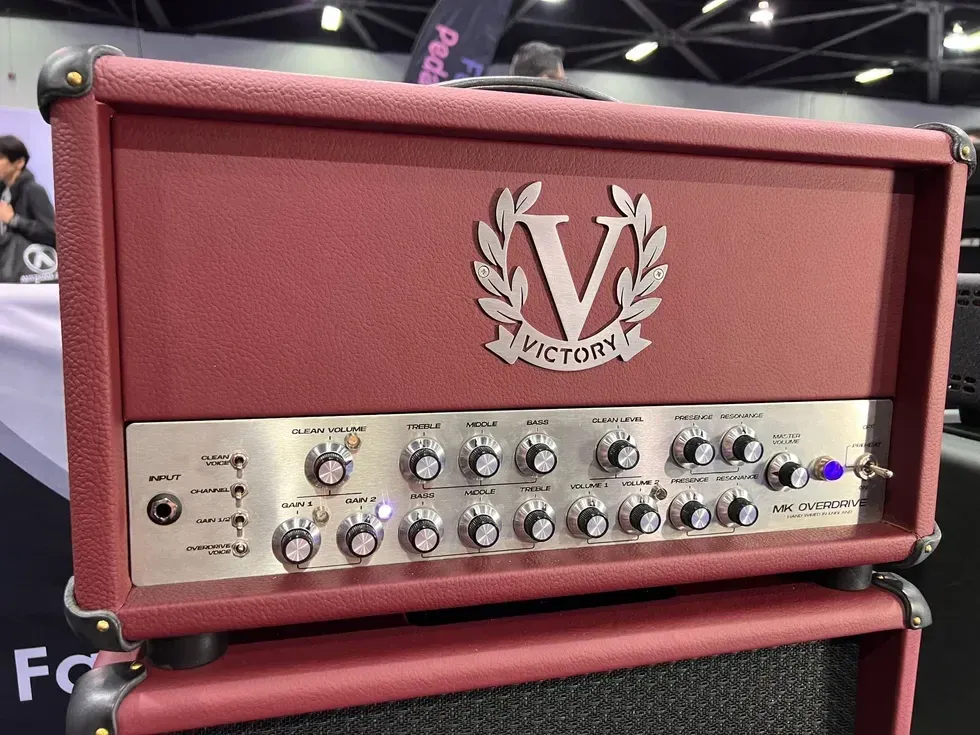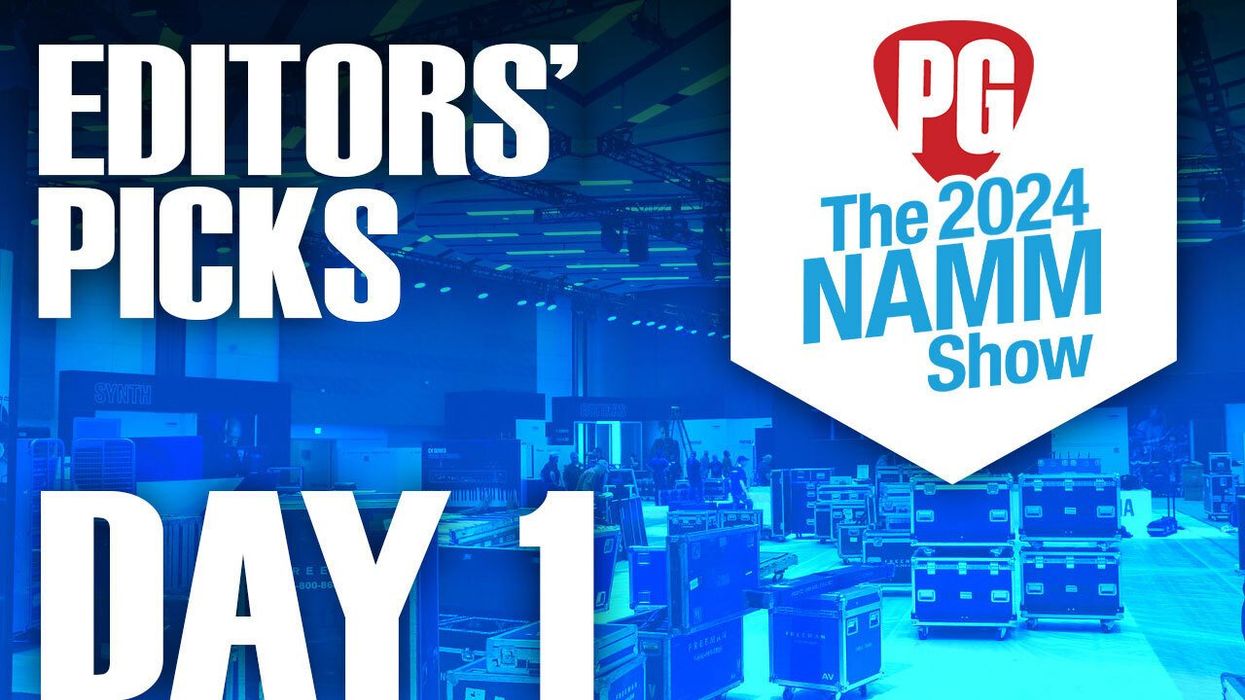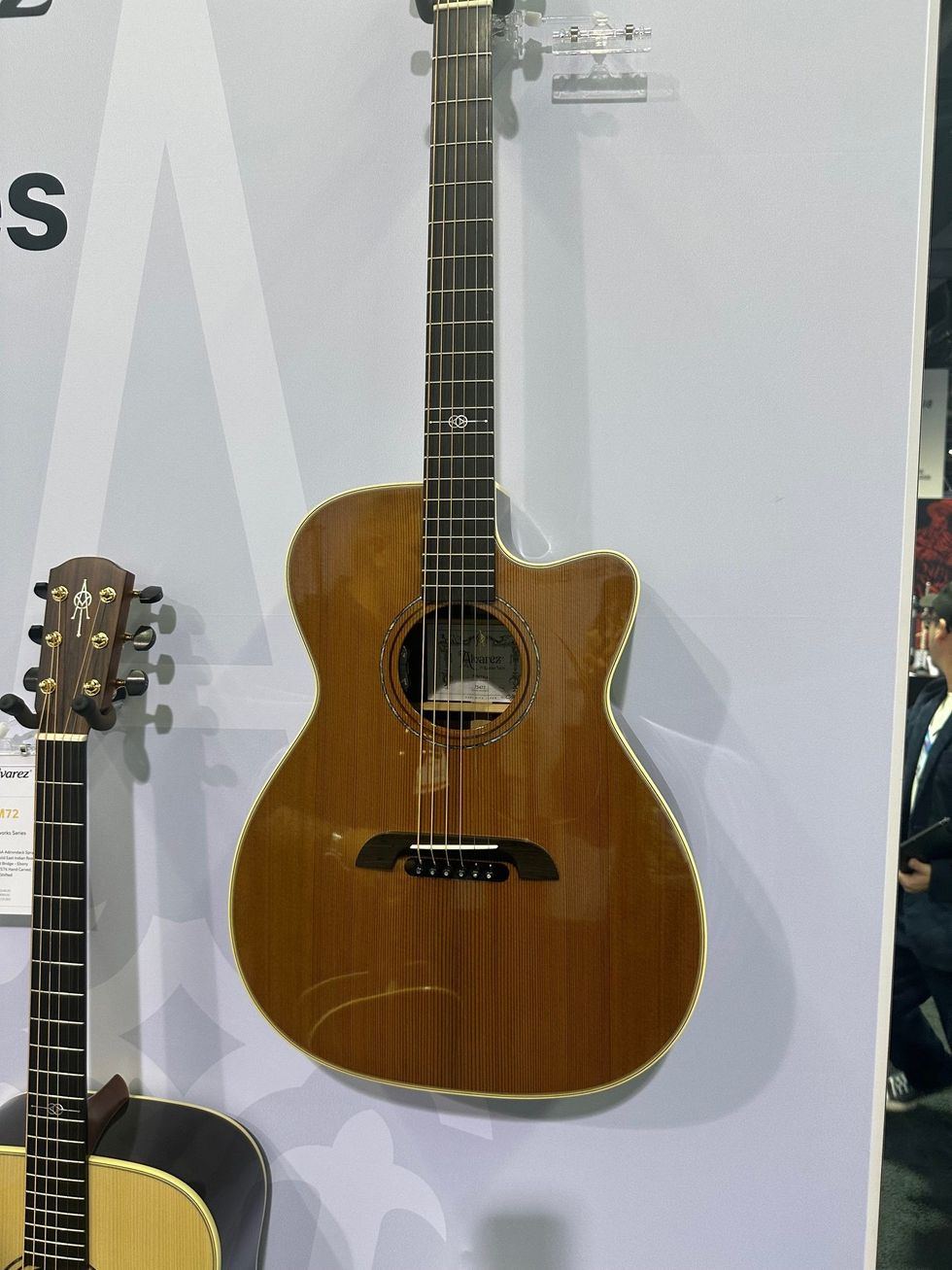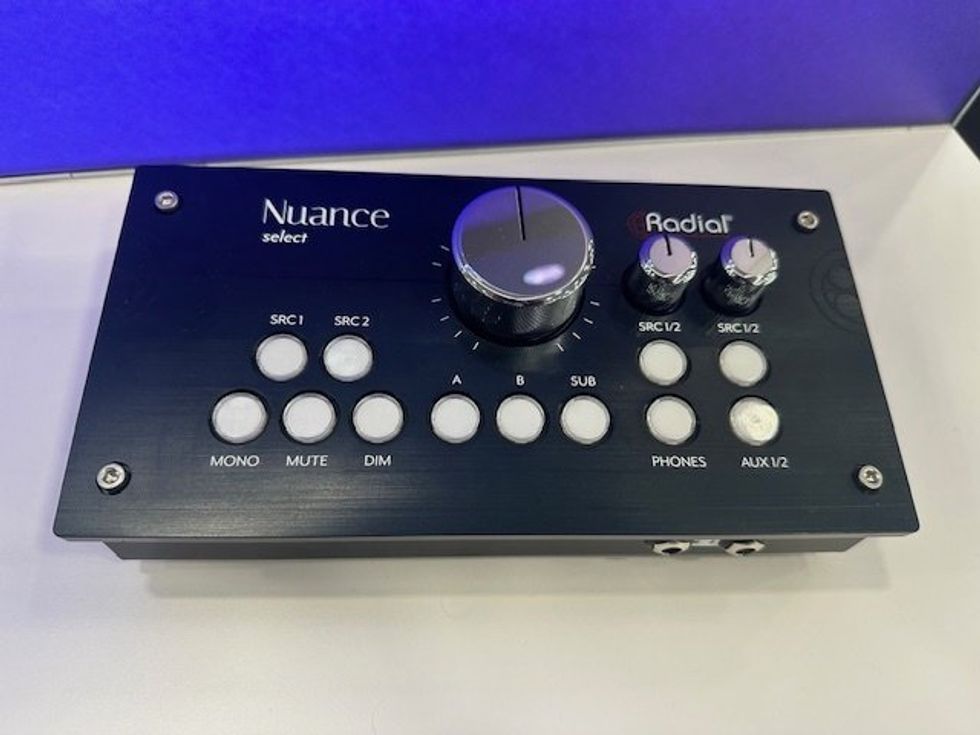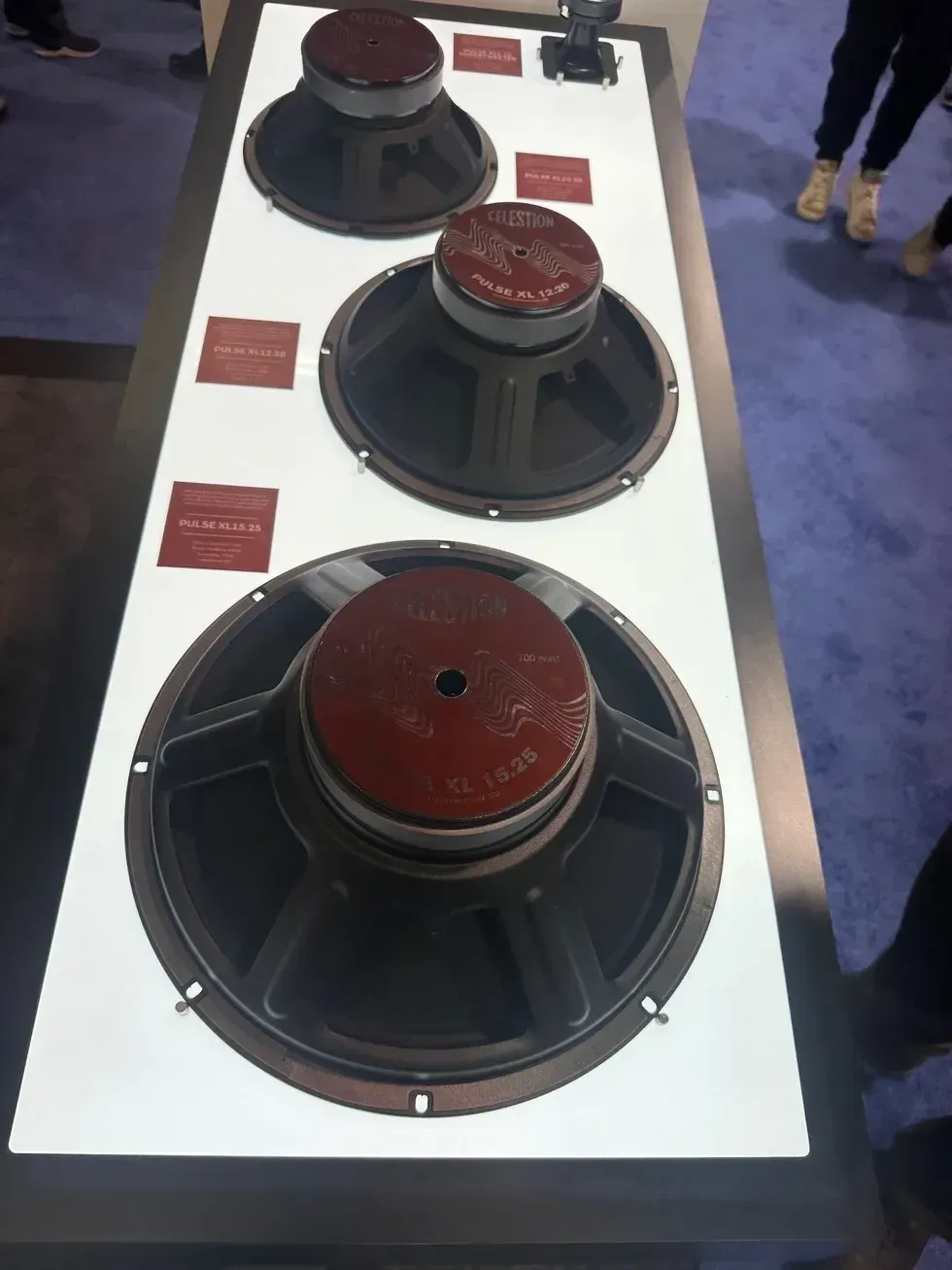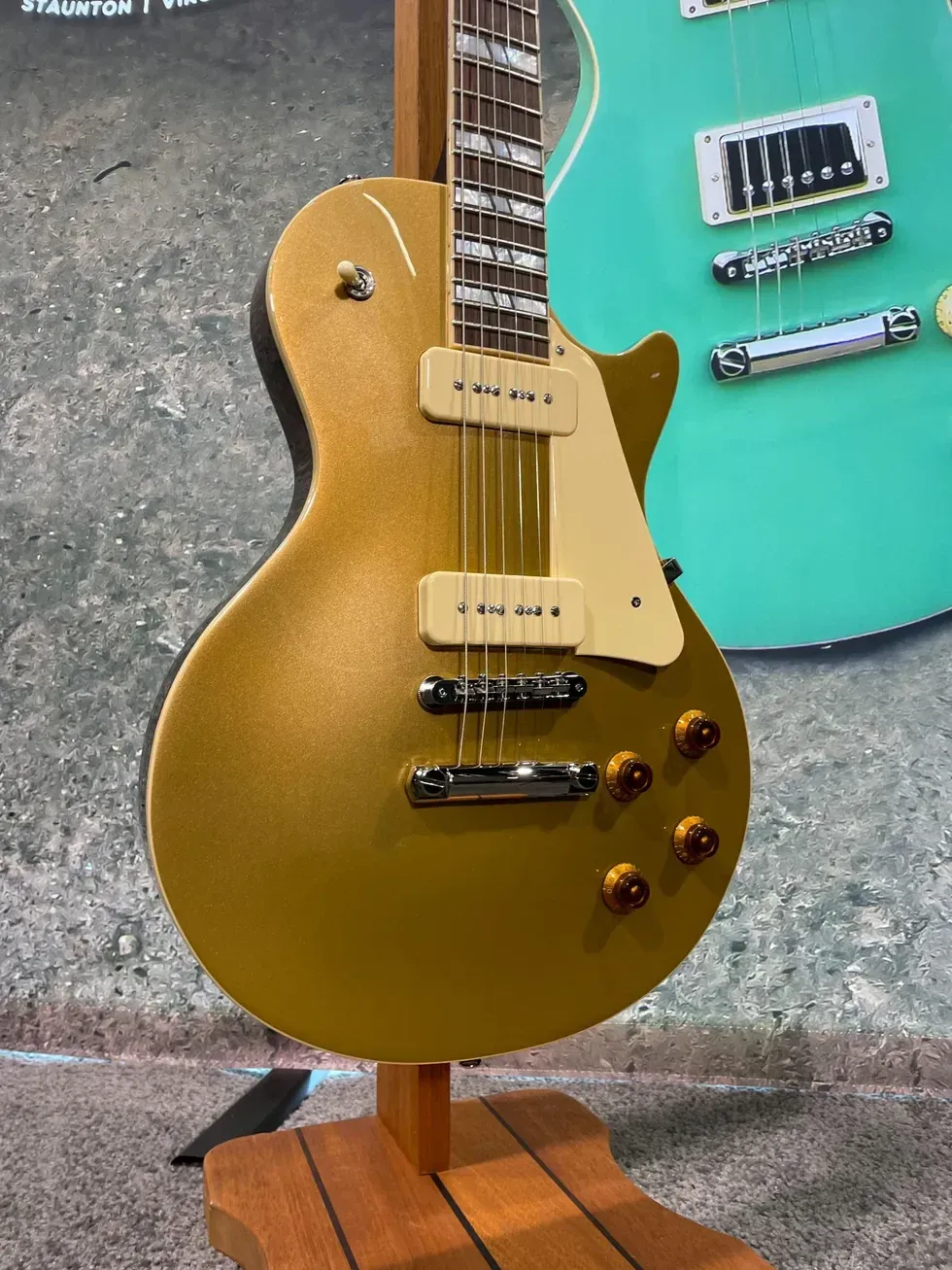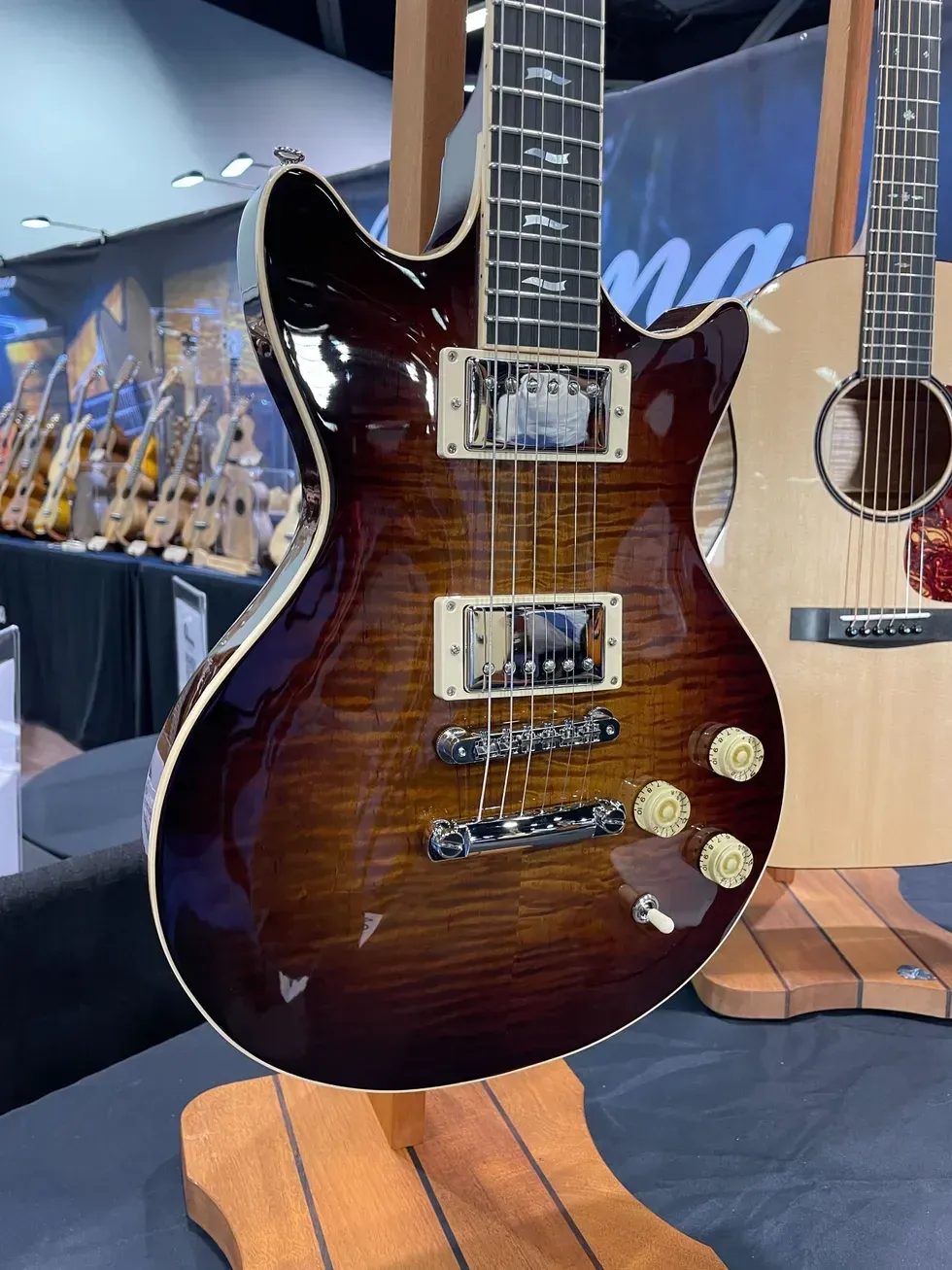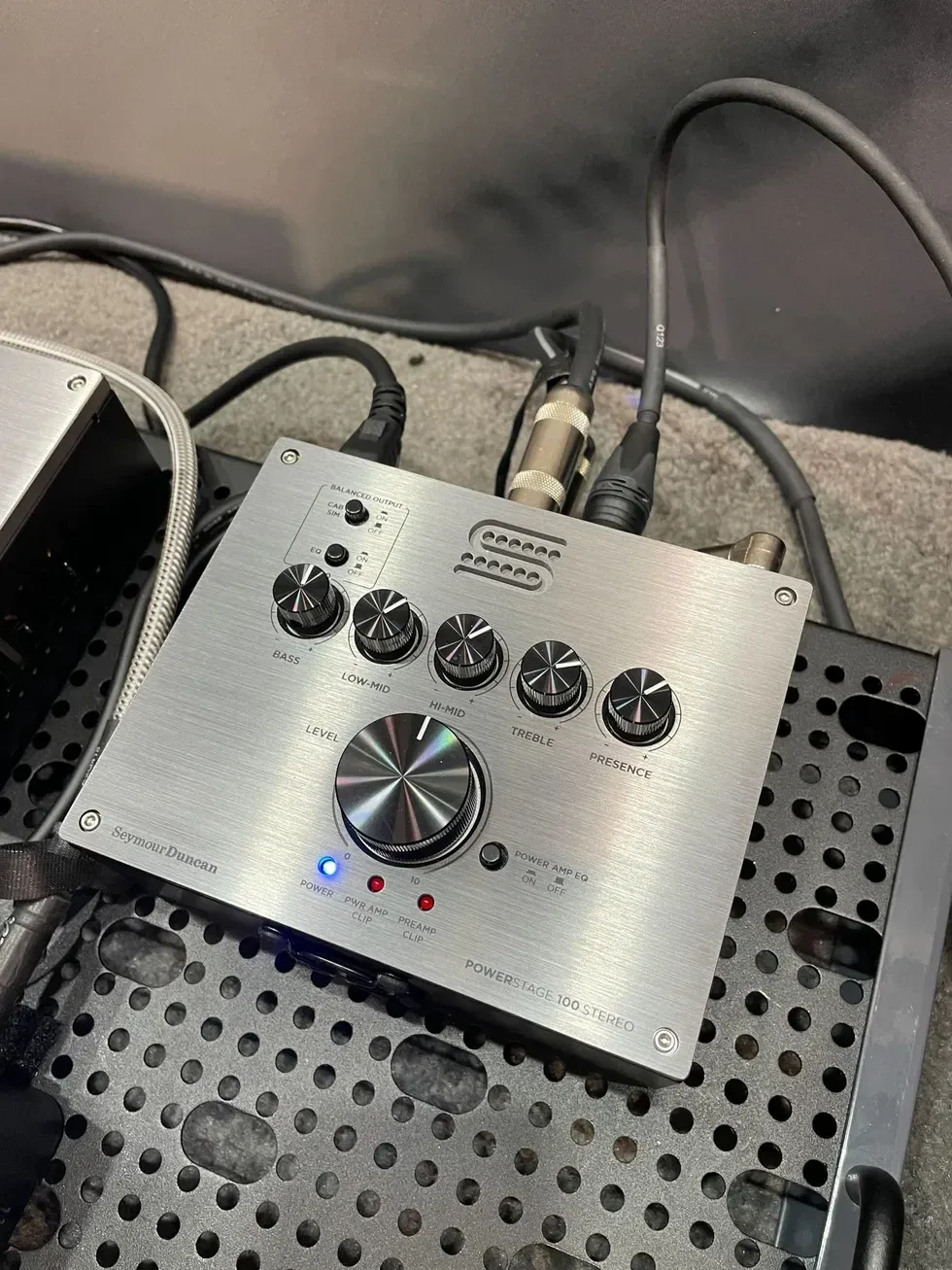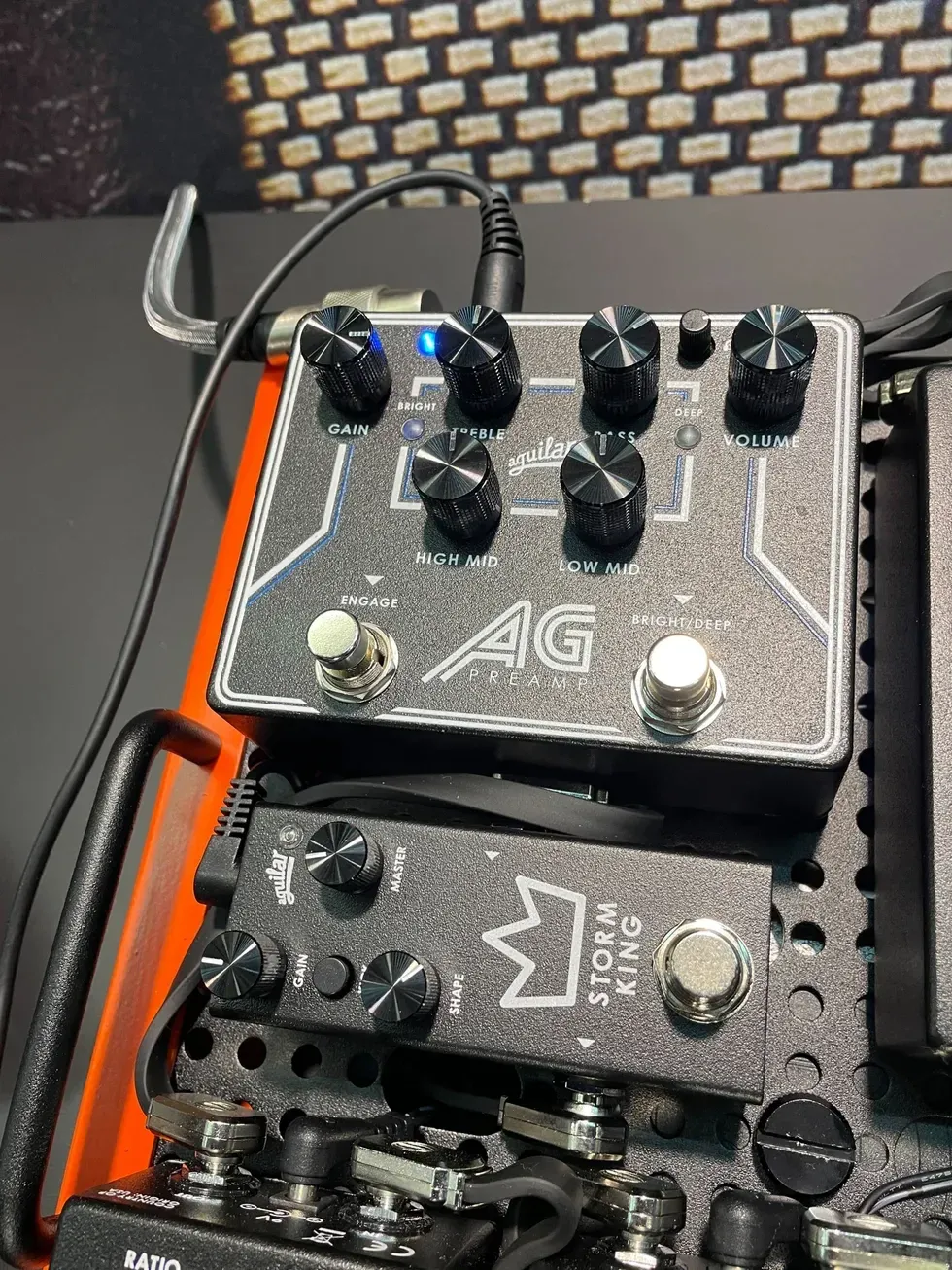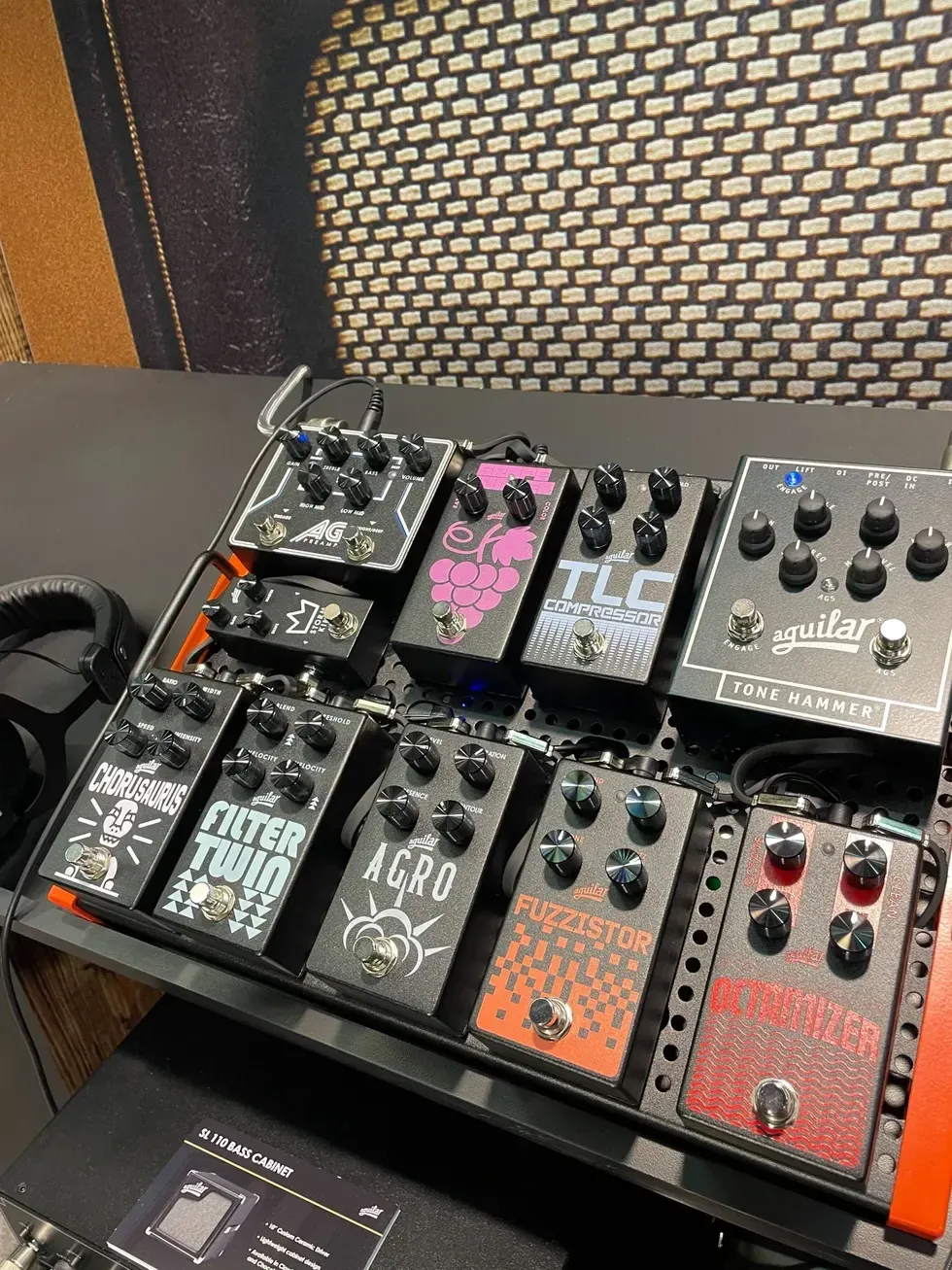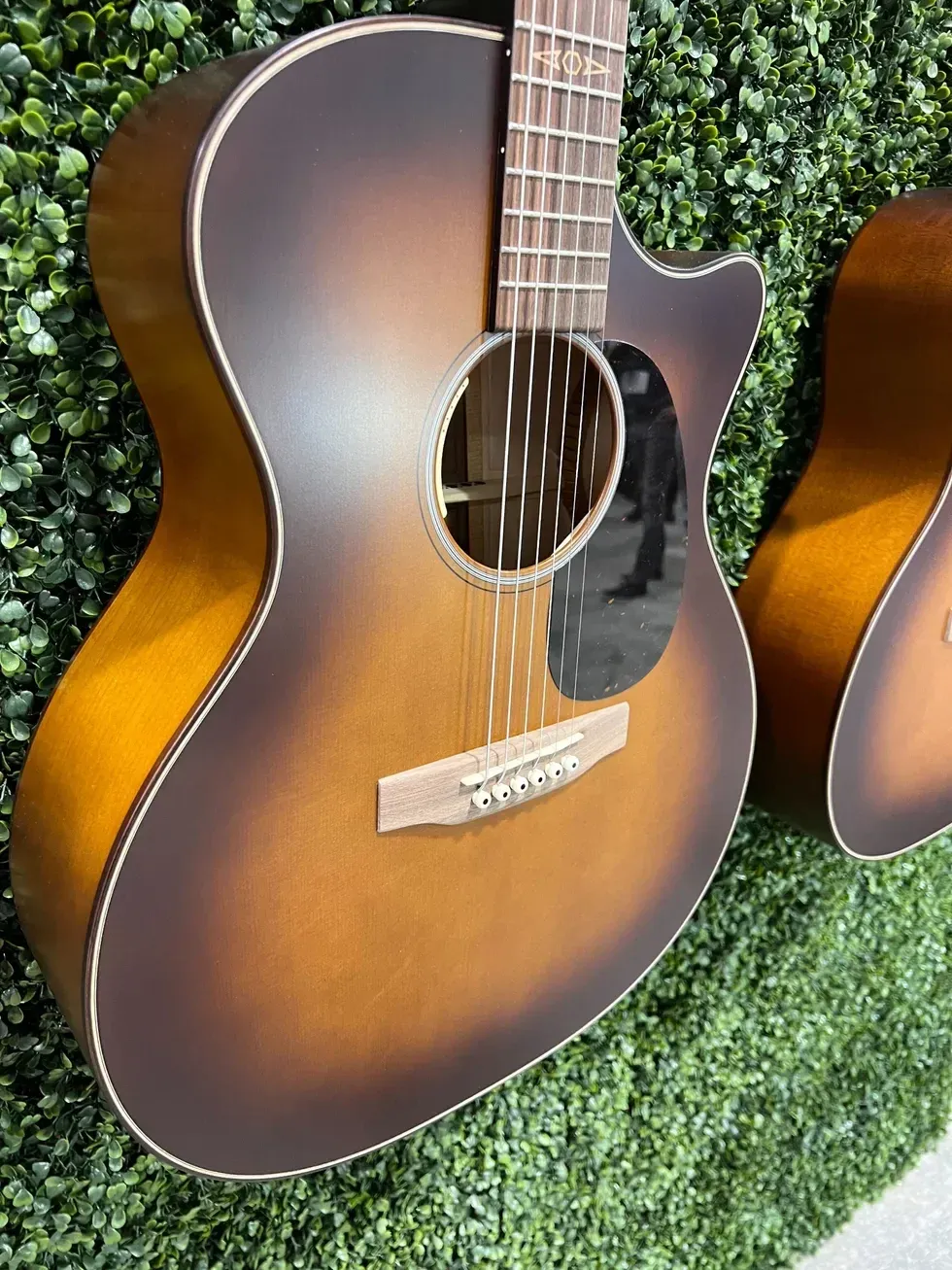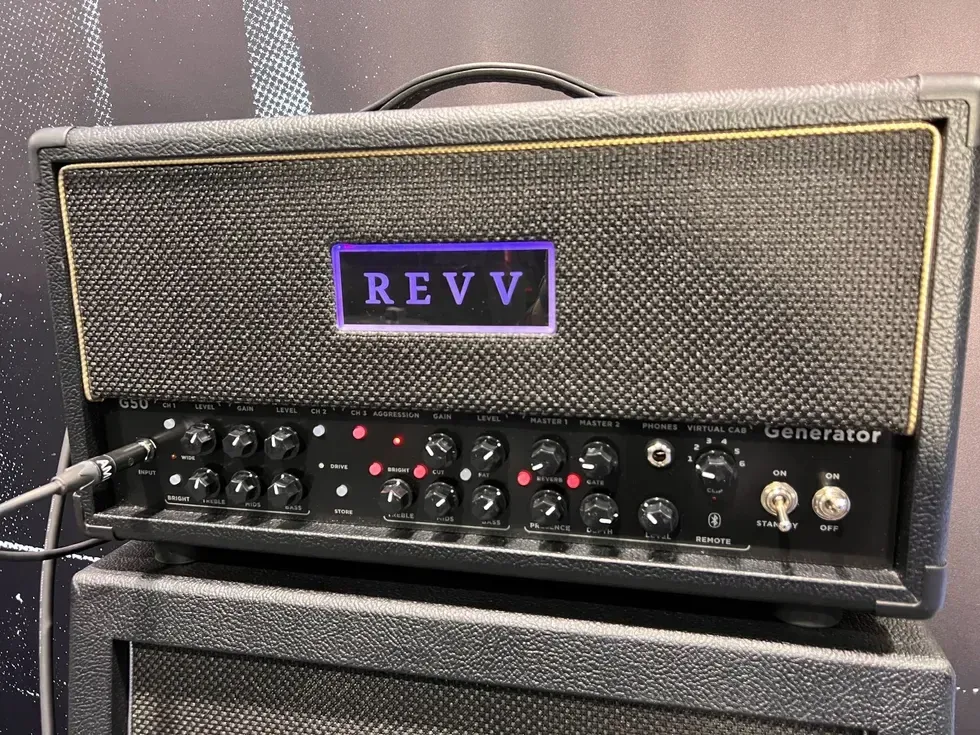When it comes to the pedalboard puzzle of assembling your guitar toys into an order that works for you and your sound, putting it all together is an adventure. Each year, we love to play voyeur to approaches wide and far … and learn about obscure stomps we’ve never tried before. Enjoy!
Aaron Juracek: Jackson Audio Enthusiast
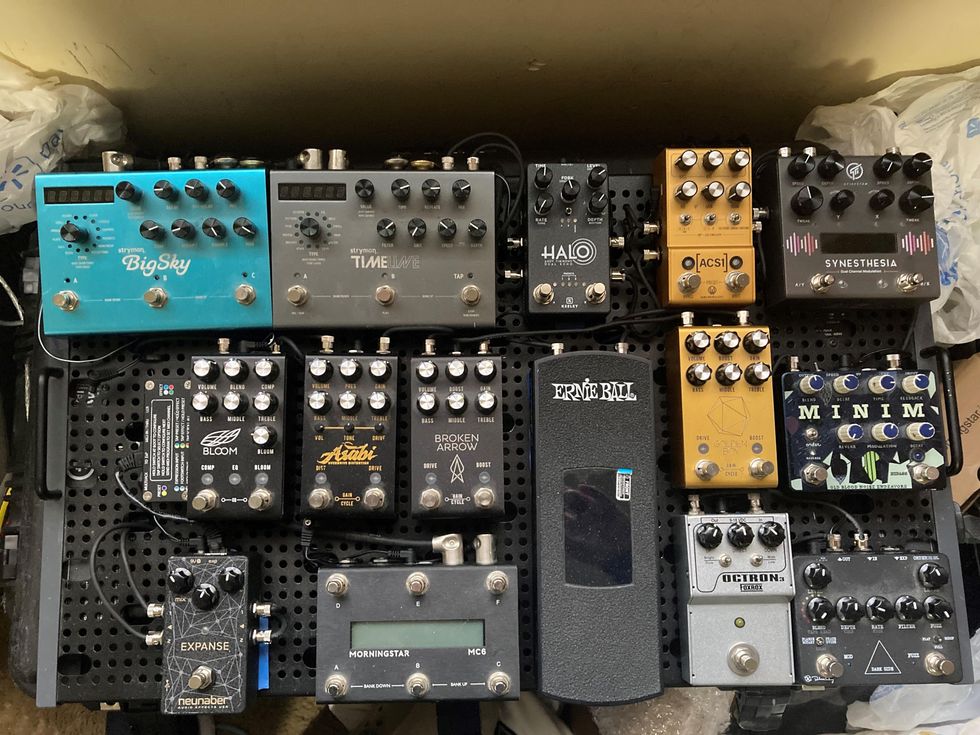
I love Jackson Audio pedals. They sound amazing and are the only usable MIDI-controlled gain pedals I can find. There are other MIDI-controlled drives, but I find that whenever you play in a different room, the drive settings need to change, which, for a lot of them, means modifying presets every time you play in a different location. These have all of the gain and EQ settings as knobs, so I can just change them on the fly, and still have MIDI control whether it’s on or off—the clipping type and the gain staging. I also love the combination of the Strymon BigSky and Neunaber Expanse reverb. The Cloud reverb from the BigSky into the wet reverb setting on the Expanse is one of the most beautiful sounds I have ever heard.
From my guitar I go to an Old Blood Noise Minim, FoxRox Octron 2, and a Keeley Dark Side before going into the loop of a GFI Synesthesia. In the loop sits a trio of Jackson Audio pedals: Golden Boy, Broken Arrow, and Abasi along with my amp’s preamp section (via the effects loop) and a Jackson Audio Bloom. Out of the GFI’s post-section sits a Walrus Audio ACS1, Keeley Halo, Strymon TimeLine, Strymon BigSky, and a Neunaber Audio Expanse. From there I can choose whether I need to go mono or stereo and if I need to use an amp or go direct.
Andrew Yankowsky: Simple, Not Elegant
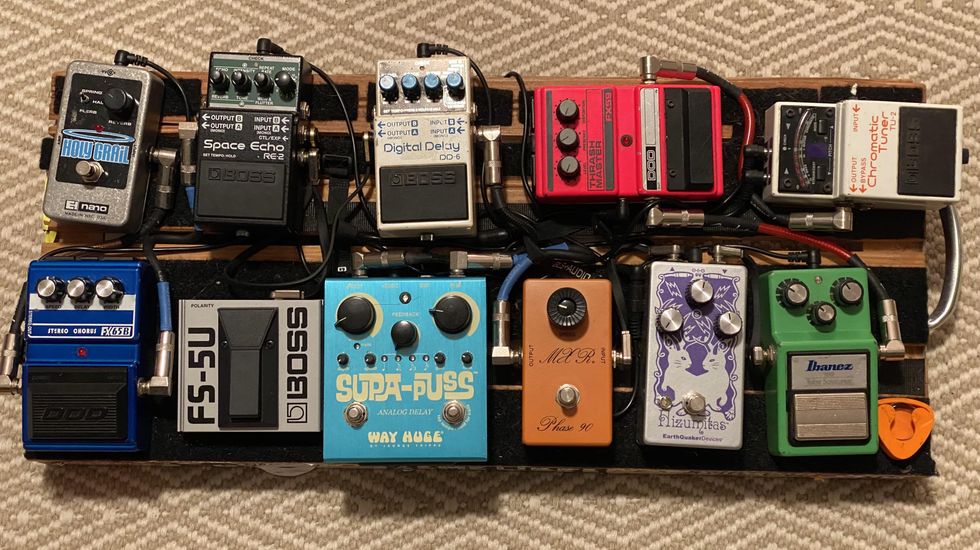
I play, write, and record music for a local ska/reggae/punk/Afrobeat band called Zeme Libre out of Portland, Maine. I put this board together to take a bit of a beating at live shows with wonderful pedals that give me the tone and sound I’m looking for. Although my board changes every so often, I keep similar pedals in the mix to keep certain sounds I use on recordings. Simple, not elegant. Thanks for checking it out!
First, I go into the Boss TU-2, DOD FX59 Thrash Master, Ibanez TS9 Tube Screamer, EarthQuaker Devices Hizumitas Fuzz Sustainar, MXR Handwired Script Phase 90, Way Huge Supa-Puss Analog Delay, Boss DD-6 Digital Delay, Boss RE-2 Space Echo (connected with Boss FS-5U Foot Switch for tap tempo), DOD FX65B Stereo Chorus, and out to an Electro-Harmonix Holy Grail Nano.
Chris Voigt: My Modest Bass Rig
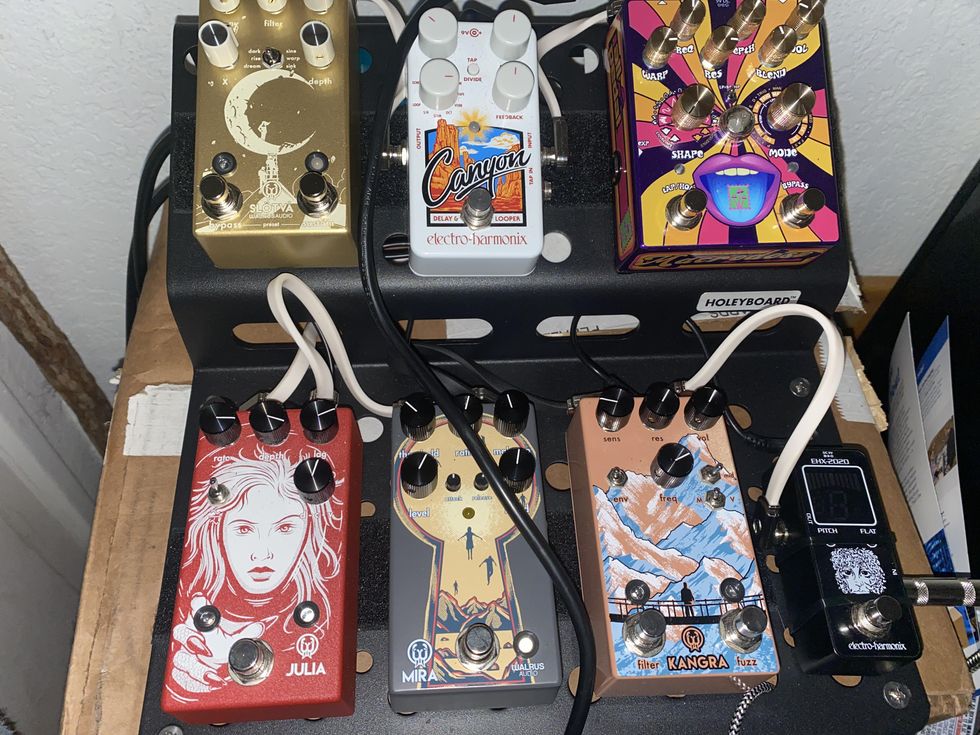
My board is still and ever evolving. At the moment, it has just about everything I need or want. People often ask me why I don’t use a preamp. The answer is, simply, that I really like the tone of my Orange Bass Crush 100 and the gain it delivers. My favorite pedal is the All-Pedal Electronics Macrodose Envelope Filter. It’s a very fun pedal with many face-melting psychedelic tones and shapes, and it pairs nicely with the Walrus Audio Slötvå.
This is my modest bass rig. Pedalboard is run through an Orange Bass Crush 100 FX loop: Electro-Harmonix EHX-2020 Tuner > Walrus Audio Kangra Filter Fuzz > Walrus Audio Mira Optical Compressor > Walrus Audio Julia Chorus/Vibrato > All-Pedal Electronics Macrodose Envelope Filter > Electro-Harmonix Canyon Delay & Looper > Walrus Audio Slötvå Multi-Texture Reverb.
Guido Stoecker: Love for Lehle and Weehbo
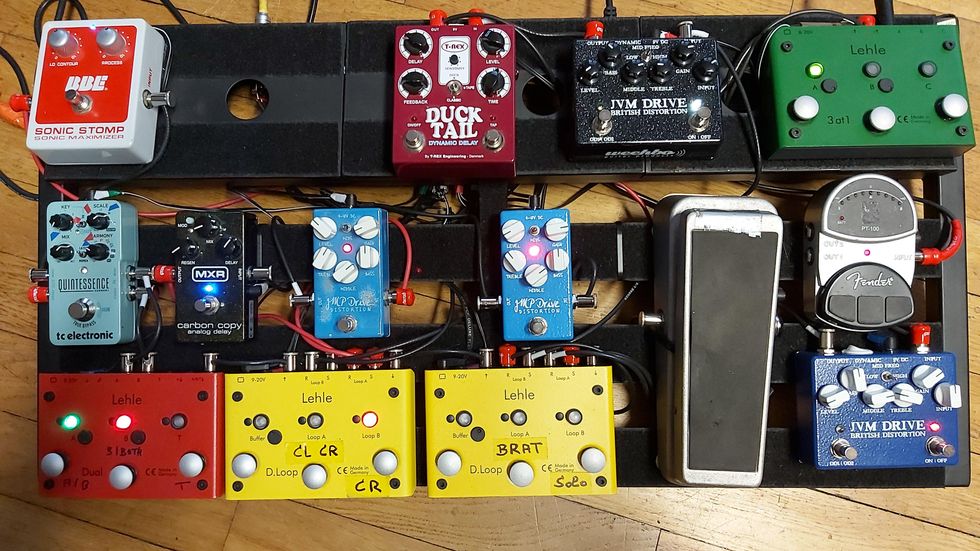
After two decades of using a Bogner Ecstasy, I was introduced to Eich Amplification, and I’m endorsing them now by using the GT3500 non-master volume head. It took me more than a year to come up with the concept of the board, testing tons of overdrive pedals, ’til I found Weehbo guitar pedals. On the spot, they gave me the sound I wanted. I took the board out on the road on a tour with the Sweet and it worked fantastic with no failure in any way. Easy to handle—it is big, it looks big—but it is, at least, very simple.
The board is controlled by Lehle switchers. My guitar runs into the Lehle 3at1 green switcher. From there, the signal runs into a Real McCoy Wah, into the first yellow Lehle D. Loop, from there to the next yellow looper, and finally into the red Lehle Dual switcher. Then we go stereo into the TC Electronic Quintessence, from there one channel to amp 1, the other channel into the BBE Sonic Stomp, then into amp 2. The yellow loopers allow me to only connect the pedal I need for each sound into the chain; all others are off then. I use a Weehbo JMP Drive and an MXR Delay for my slightly distorted clean tone, and a second Weehbo JMP Drive for AC/DC-like crunch. This can be boosted by the second looper. The blue Weehbo JVM Drive is my main distorted rhythm sound. The black Weehbo JVM Drive in connection with the T-Rex Duck Tail Delay is my lead sound (the Duck Tail has a tap function). I can connect up to three guitars to the board. For tuning, I press the button on the green Lehle switcher, and the signal is led then to the Fender PT-100 Tuner, so I can tune without any sound. The board is powered by two CIOKS power supplies.
Mako G: The Surfybear Board
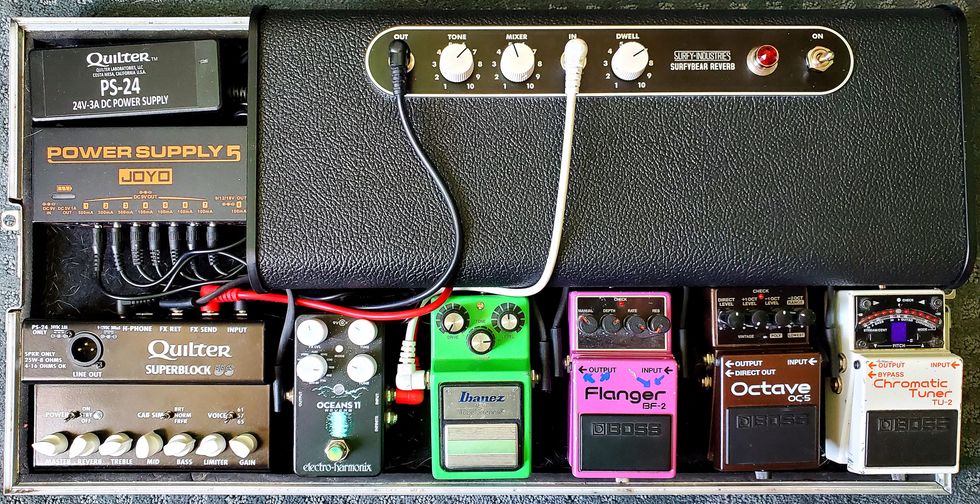
This is my surf guitar rig. The Surfy Industries Surfybear Reverb provides the essential, classic spring reverb “drip”; the Boss OC-5 Octave instantly turns me into two thirds of a power trio; the Boss BF-2 Flanger is used as an organ simulator; the Ibanez TS9 Tube Screamer is used as a dirty boost. I originally got the Electro-Harmonix Oceans 11 to do what the Surfybear does, but kept it on the board even after getting the Surfybear, because it’s so versatile. I mainly use it for tremolo. The Quilter SuperBlock is basically three classic Fender amps that fit on a pedalboard and can even be powered by a power brick at lower volumes. With the Joyo JP-05, the full rig can be powered without being plugged into a wall (I also use an adapter to turn a cell phone powerbank into a 12-volt source for the Surfybear).
- Boss TU-2 Chromatic Tuner
- Boss OC-5 Octave
- Boss BF-2 Flanger
- Ibanez TS9 Tube Screamer
- Surfy Industries Surfybear Classic Reverb
- Electro-Harmonix Oceans 11 Reverb
- Quilter SuperBlock US Guitar Amplifier
- Powered by Joyo JP-05 (rechargeable power supply)
Marc Weakland: Like a Skateboard
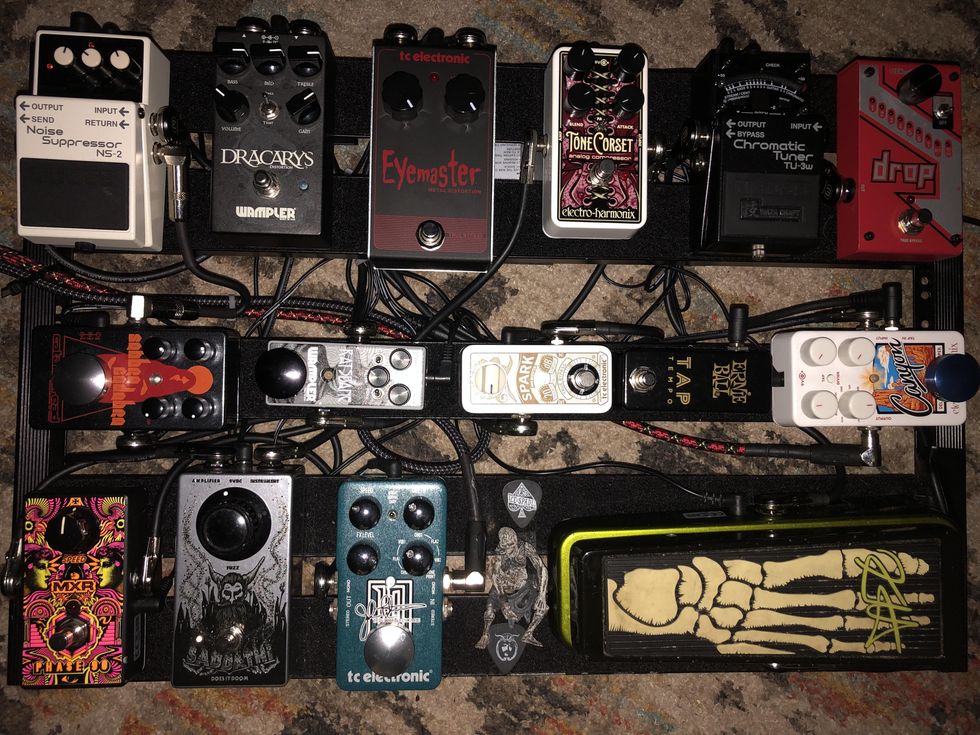
When I was younger, I lost both my legs from the knees down. I have to play sitting down due to my balance. I can’t flex my artificial foot, so I have my Wah horizontal on my board and play it with two feet like a skateboard!
Here’s the breakdown of my pedals: DigiTech Drop, Boss TU-3W, Dunlop Kirk Hammett Wah, Electro-Harmonix Tone Corset, Does It Doom Sabbathi Fuzz, TC Electronic Spark Mini Booster, TC Electronic Eyemaster Metal Distortion, Wampler Dracarys, Wampler Ratsbane, Catalinbread Sabbra Cadabra, Boss NS-2 Noise Suppressor, TC Electronic Dreamscape, MXR Phase 90, Ernie Ball Tap Tempo, Electro-Harmonix Canyon Delay & Looper.
Matei Haskins: Divine Purpose
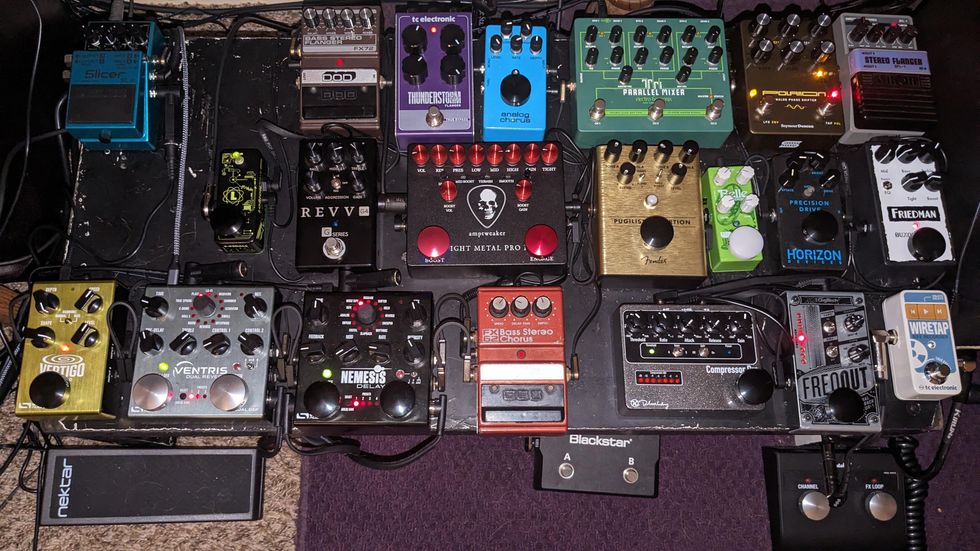
I’m permanently disabled with a neurological movement disorder, so I’m usually broke, but I got a year of rent assistance last year and was able to build up a recording studio again (I lost my original studio and instruments to homelessness). I got all of these in 2022, but this is it. Back to paying rent—I can barely afford to keep fresh strings on the guitar and bass. But I have what I need to stay creatively productive. These are bass and guitar pedals in one chain; I just switch the amps. The board is a coffee table cut short to 8" and spray-painted black. Music is the only effective treatment for my neurological condition and my divine purpose on Earth is to create music and dance. You can hear the music I make with this pedalboard at DECEMBERmusic.org.
My signal chain:
Guitar > TC Electronic Wiretap Riff Recorder > DigiTech FreqOut > Keeley Compressor Pro > Friedman Buxom Boost > Horizon Devices Precision Drive > Wampler Belle > Fender Pugilist > Amptweaker Tight Metal Pro II > Revv G4 > F-Pedals Lorion > Marshall DSL20CR, FX send > Behringer PEQ-2200 rack (not pictured) > Electro-Harmonix Tri-Parallel Mixer [Loop 1: Arion SFL-1 Stereo Flanger, Loop 2: Seymour Duncan Polaron, Loop 3: MXR Analog Chorus > TC Electronic Thunderstorm Flanger > DOD FX72 Bass Stereo Flanger] > DOD FX62 Bass Stereo Chorus (stereo out) > Source Audio Nemesis Delay > Source Audio Ventris Dual Reverb > Source Audio Vertigo Tremolo > Boss SL-2 Slicer > two BBE Sonic Stomps (not pictured) > FX returns (Marshall DSL20CR left, Marshall Valvestate 40V 8040 right)
Randy Johnson: Crunchy, Crunchier, Uber-Crunchy
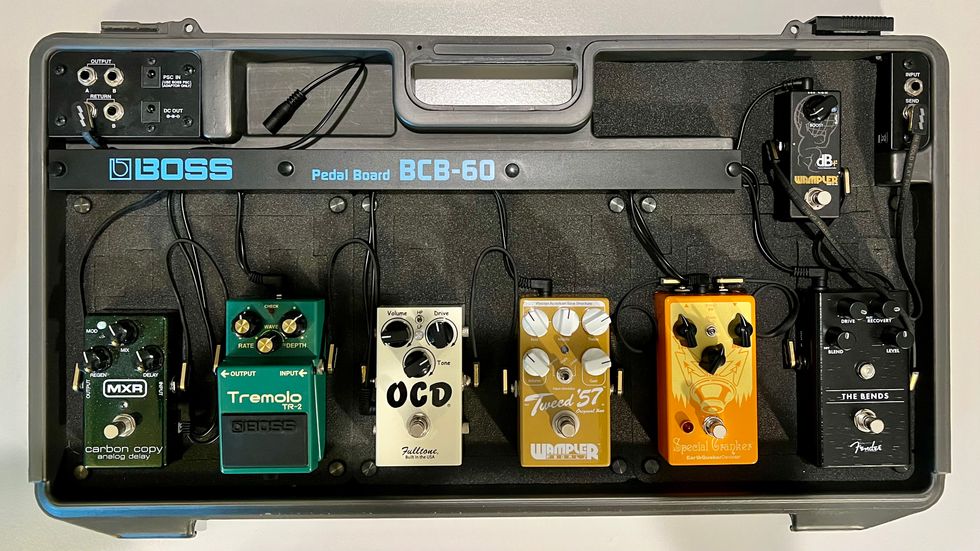
I like the Boss BCB-60 Pedal Board because the foam padding can be shaped to hold your pedals firmly in place without having to use Velcro tape or zip ties, and provides for a very clean presentation. My board has evolved over the years, having gone through many different iterations before arriving at my current setup. The more I used my board in a live setting, the more I realized that certain tones could be improved more to my liking, or others were just not used that much. I’m very happy with how my personal quest for tone has evolved!
I’ve finally settled in (for now) on the thought that I like the sound of overdrive ... A LOT, so my board goes from clean to crunchy, crunchier, and uber-crunchy with a few extra tools to modify the sound.
It all starts from the guitar, as follows:- Wampler dB+: I’ve got enough pedals connected that it helps to give the chain a boost at the front end, so this one is left on.
- Fender The Bends Compressor: I spent a lot of time going through compression pedals to enhance my sustain without making the signal sound squishy. This one does a great job of that, and I pretty much leave it on all the time.
- EarthQuaker Devices Special Cranker Overdrive: I love this pedal in that, unlike other overdrive pedals, you can go from zero gain to a moderate amount.
- Wampler Tweed ’57 Overdrive: This pedal does a great job of sounding like an overdriven Deluxe Reverb amp, and holds the middle position in my dirty to dirtiest chain. I don’t think that Wampler produces these anymore, so I’m really glad I was able to score one!
- Fulltone OCD: What can I say.... This is a great pedal for super-overdriven feedbacky sounds! Another pedal you need to get while you can.
- Boss TR-2 Tremolo: This comes in handy for shaping sounds on certain tunes. I don’t know if there’s anything better out there, as this one has always made me happy.
- MXR Carbon Copy Analog Delay: This is a great delay pedal, and I tend to use it mostly for solos. A good way to jump out in the mix. From here, it’s out to the amp.
Scott Agner: Charcuterie Board
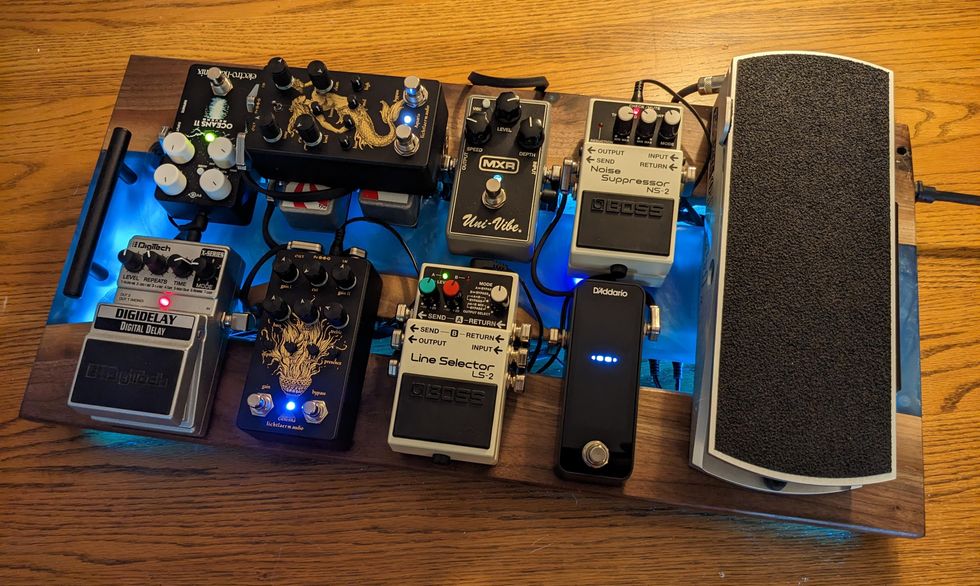
I started building my first pedalboard in August 2022 to meet some very specific needs, namely sending magnetic pickups and a piezo pickup to two different amps and using a Boss LS-2 Line Selector to switch between a high-gain tone and a psychedelic blues tone, which both include a common overdrive pedal (the Lichtlaerm Audio Aquaria).
I repurposed a black walnut/epoxy resin charcuterie board with homemade MDF base and added an LED backlight. I’m very proud of how it turned out and hope to make more wood and epoxy resin pedalboards in the future.
Signal chain as follows:
Boss NS-2 to D’Addario PW-CT-23 to Boss LS-2 (Loop 1: MXR Uni-Vibe to Saturnworks Passive Combiner to Lichtlaerm Audio Aquaria to Saturnworks Passive Splitter back to LS-2; Loop 2: Saturnworks Passive Combiner to Lichtlaerm Audio Aquaria to Saturnworks Passive Splitter to Lichtlaerm Audio Gehenna back to LS-2) to amp input, amp effects send to Ernie Ball Stereo Volume/Pan (fades between magnetic pickups to electric amp and piezo pickup to acoustic amp) to DigiTech DigiDelay to Electro-Harmonix Oceans 11 to amp effects return.
Scott McCue: Drilled My Own
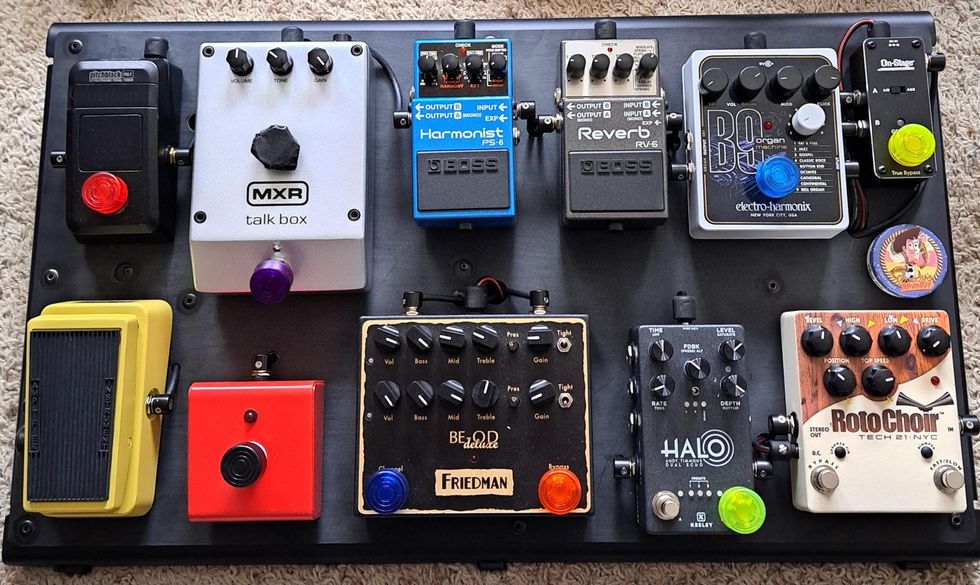
It started with a medium Mono Pedalboard, but I didn’t care for the huge holes. So, I mounted a piece of polyboard onto it and drilled the holes where I needed them. All of my power and patch cables are custom made to length. Of course, it’s foolish to think I’m done. Lol.
Signal chain: Line 6 Relay G50 wireless system (underneath with power supply), Korg Pitchblack Poly tuner, A/B switcher. Path A of my chain starts with the mini wah, into the Friedman BE-OD Deluxe, Electro-Harmonix B9 Organ Machine, and Tech 21 Roto Choir to a Friedman Smallbox amp. Path B of my chain is a Boss PS-6 Harmonist, MXR Talk Box, Keeley Halo Andy Timmons Dual Echo, to the Boss RV-6 Reverb in the effects loop.
Stephan Stacey: Are you a Holdsworth?
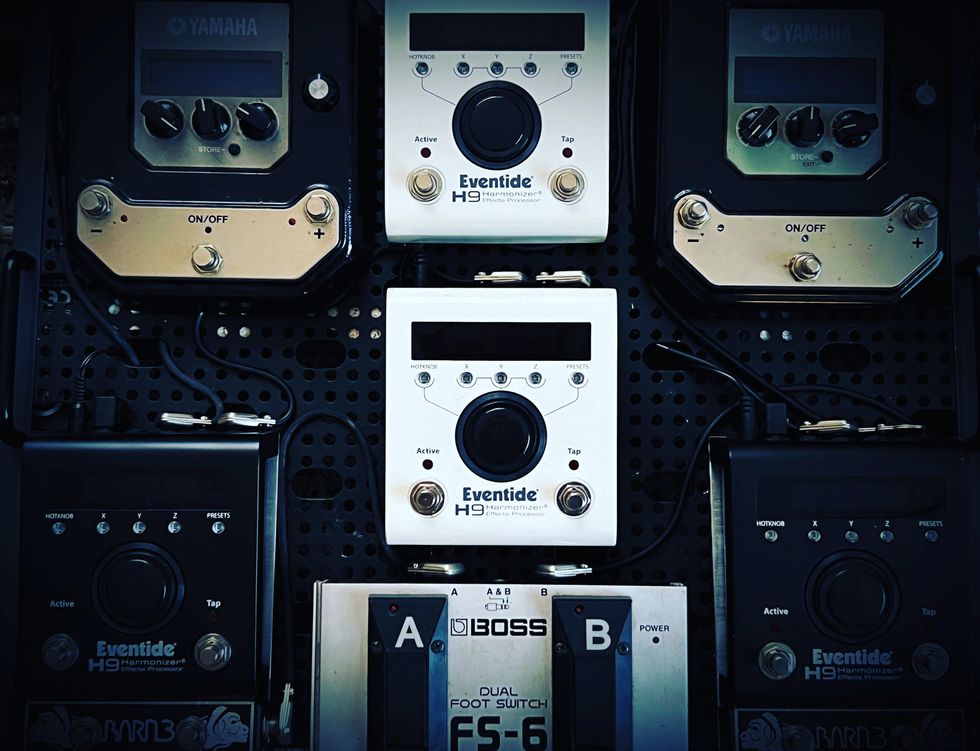
Two Yamaha Magicstomp IIs (their modulations and multi-tap delays still can’t be beaten) bookend Eventide H9 Harmonizer units for days! So much sonic flexibility in a relatively small footprint (by today’s mega-board standards).
The two Magicstomps have been staples since they were released in 2001. (No, I’m not particularly an Allan Holdsworth, which is always the first question.) Many, many other pedals have come and gone until I realized that the Eventide H9 could cover so much ground. Then one became two, and two became four.
Stephen Cyford: The Illuminator
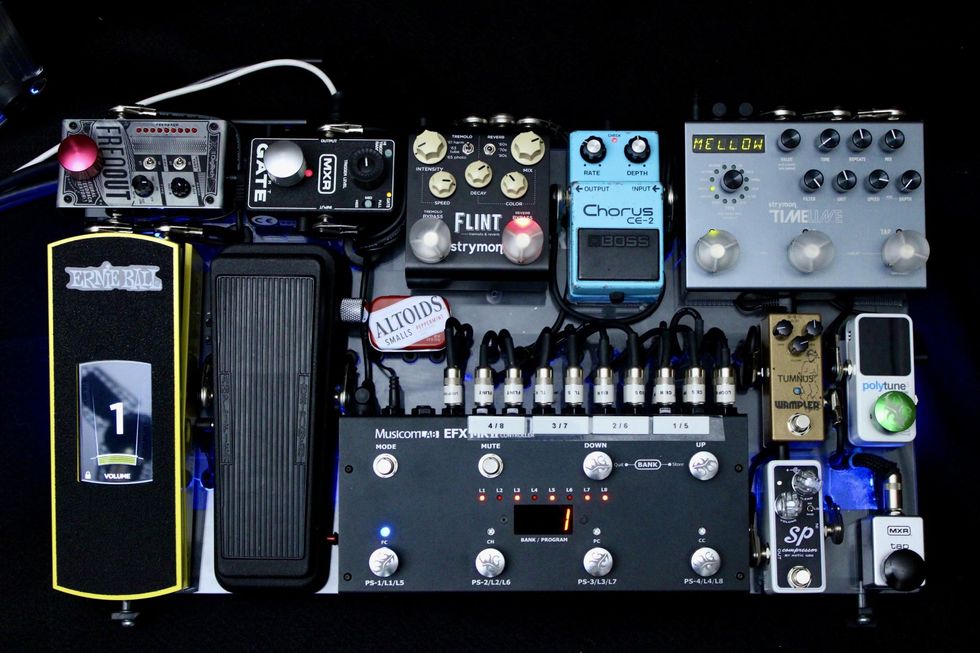
I could’ve gone crazy with the number of pedals but my goal with this board was to limit myself to the size of the Pedaltrain 2. I feel it’s worthwhile to invest in a good soldering iron and make your own cables. On my Pedaltrain 2 board, I utilized a plexiglass top to increase surface area and to have an illuminated edge on all sides of the board.
It’s a good idea to leave at least one auxiliary position on your board, two if you utilize an FX loop (one in front of the amp and one in the loop). In my setup, the DigiTech FreqOut (in front) and the MXR Smart Gate (in amps effects loop) can easily and quickly be swapped for another pedal.
Signal chain:
Guitar > TC Electronic PolyTune 3 > Dunlop Cry Baby Mini 535Q Auto-Return Wah > DigiTech FreqOut > Musicomlabs EFX MKII switcher input A > Xotic SP Compressor (loop 1) > Wampler Tumnus (loop 2) > (loop 3 and 4 empty) > Musicomlabs EFX MKII output A to input of the amp (Bogner Shiva 20th Anniversary or EVH 5150III) > FX loop send > Ernie Ball VPJR Super Bee > Musicomlabs EFX MKII input B > 1982 Boss CE-2 Chorus (loop 5) > MXR Smart Gate (loop 6) > Strymon TimeLine (loop 7) > Strymon Flint (loop 8) > Musicomlabs EFX MKII output B > Amp FX return.
Additional fun facts about how I use this board:
- MXR Tap Tempo simultaneously sets tempo of the Strymon TimeLine and the Flint’s tremolo.
- Musicomlabs EFX MKII sends MIDI commands to the amps for channel switching.
- Voodoo Lab Pedal Power 2 Plus powers everything. The Strymon TimeLine utilizes the Pedal Power’s courtesy AC output for power.
- All Mogami 2319 cables with a mix of HiCon, SP400, and Switchcraft plugs.
- LED tape strip under board is also powered by the Voodoo Lab Pedal Power 2 Plus.
- Altoids tin stores picks.
- Board has been gigged routinely since 2016.
Steve Tumolo Jr: Two Tiers of Tone
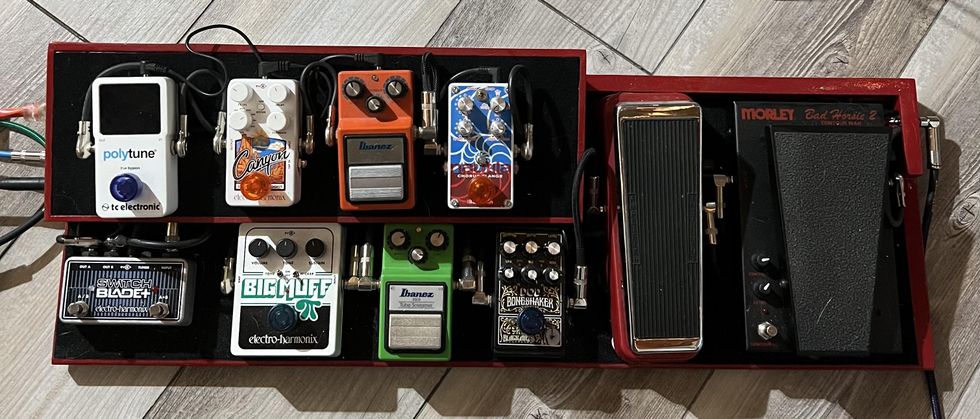
My best friend and mad scientist Don Kern built this board for me. We went with a two-tier design for ease of getting to the back row of pedals. From the start, the plan was to run the A/B setup. The fatness of the Fender blends well with the Marshall. I keep the tuner all the way to the left because I use my right foot to hit all the pedals, and it made more sense to keep it out of the way and not waste the space by putting it in front of the other pedals.
This is what I’ve got going on: Morley Bad Horsie 2 Contour Wah, Dunlop Rotovibe, DOD Boneshaker Distortion, Ibanez TS9 Tube Screamer, Electro-Harmonix Big Muff Pi, DigiTech Nautila, Ibanez PT9 Phaser, Electro-Harmonix Canyon Delay & Looper, TC Electronic PolyTune, Electro-Harmonix Switch Blade Plus A/B box running to a Fender Hot Rod Deluxe and Marshall Valvestate VS65R.
Taylor Frost: Taking My Life Back
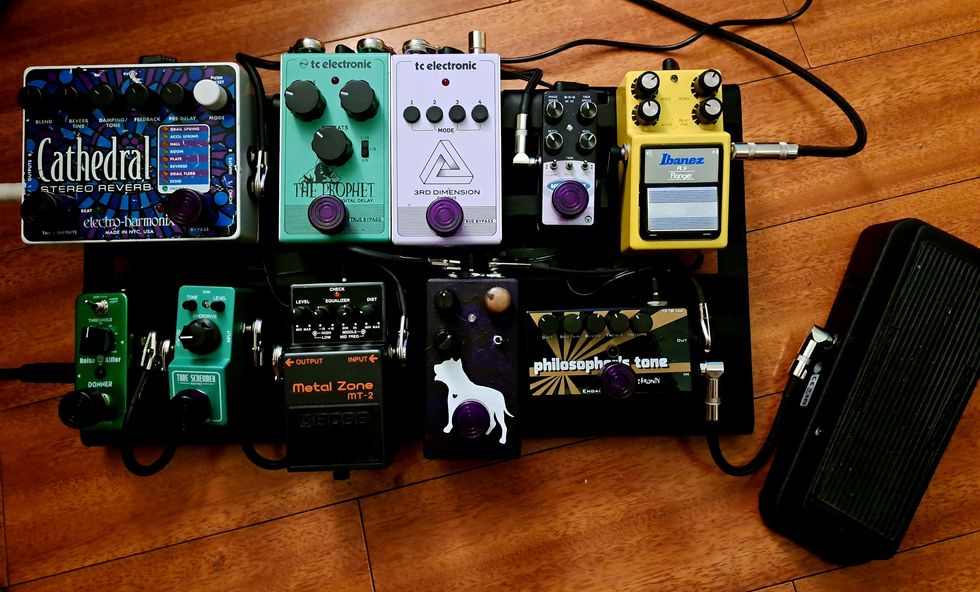
After my first year of sobriety after quitting drinking during the pandemic, I treated myself to my first effects pedal after playing for around 10 years. During my alcoholism, everything music-related seemed to drift away from me, whether it was my bandmates or my prized equipment.
As I begin my third year of sobriety, I look at my pedalboard as a reflection of the life I took back after nearly losing everything. Some pedals are the ones I lusted after in high school; others, like the FET preamp, have a special story. I repainted it purple and placed a pit bull decal on it to commemorate the dogs I’ve fostered over the years in my volunteer work for an L.A.-based pit bull rescue. Every time I fire up my board, it feels like a treat I give to myself for staying sober another day.
Effects loop: Ibanez FL9 Flanger > Pigtronix Moon Pool Tremvelope, TC Electronic 3rd Dimension Chorus > TC Electronic The Prophet Digital Delay > Electro-Harmonix Cathedral Reverb
In front: Dunlop Cry Baby 535Q Multi-Wah > Pigtronix Philosopher’s Tone Compressor > homemade FET preamp clone > Boss MT-2 Metal Zone > Ibanez Tube Screamer Mini > Donner Noise Killer
Thomas de la Perrelle: Do It All Board
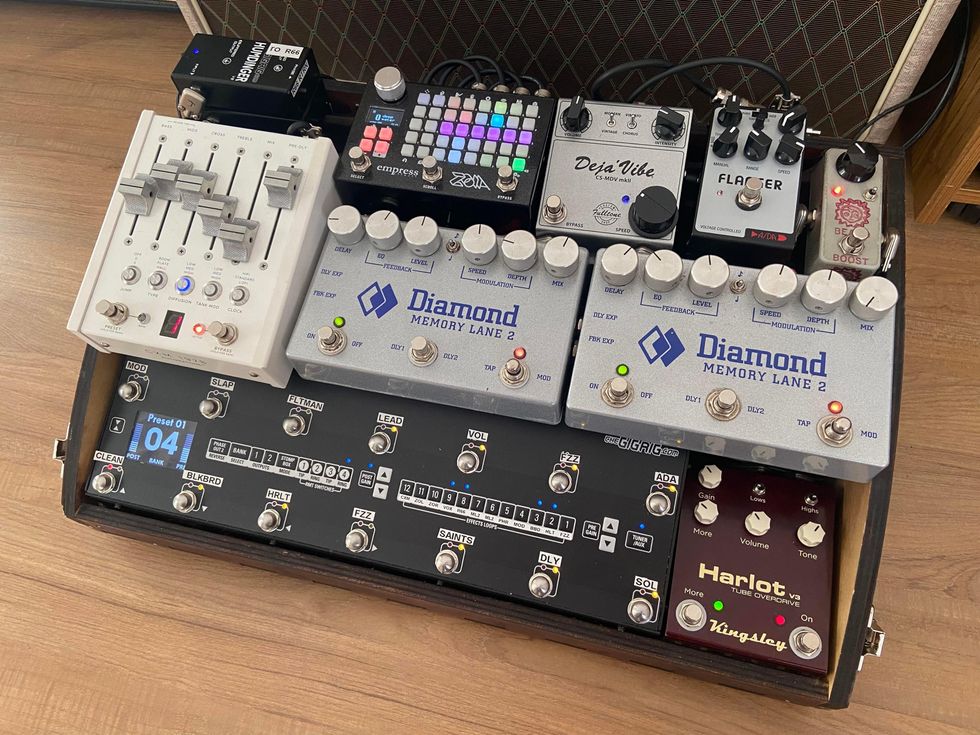
My pedalboard is my dream recording “do-it-all board,” controlled via the GigRig G3 switcher. The signal chain:
- Analog Man Beano Boost
- Williams Supa Fuzz
- Effectrode Blackbird Vacuum Tube Preamp
- Kingsley Harlot
- Universal Audio A/DA Flanger
- Fulltone DejáVibe MkII
- Moogerfooger MF-103 12-Stage Phaser
- Diamond Memory Lane 2 Analog Delay
- Diamond Memory Lane 2 Analog Delay
- Empress Effects ZOIA
- Chase Bliss Audio CXM 1978
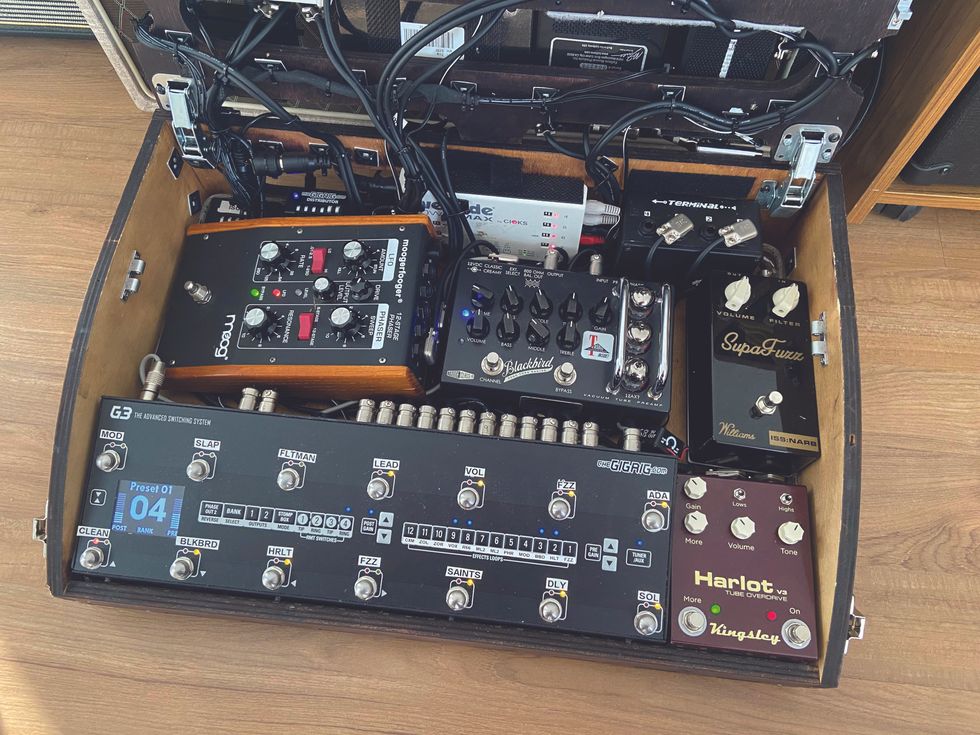
The pedals are powered by a combination of an Eventide PowerMax and a variety of GigRig power adapters.
I mainly play pop, indie, and rock music, so the board was built with the intention of having a variety of gain stages and a powerful modulation/delay section. I run the pedals in stereo or wet-dry with a Vox AC30 and a Dr. Z Route 66. The pedalboard is perfect for everything from punchy drives to atmospheric soundscapes and juicy fuzz tones.
